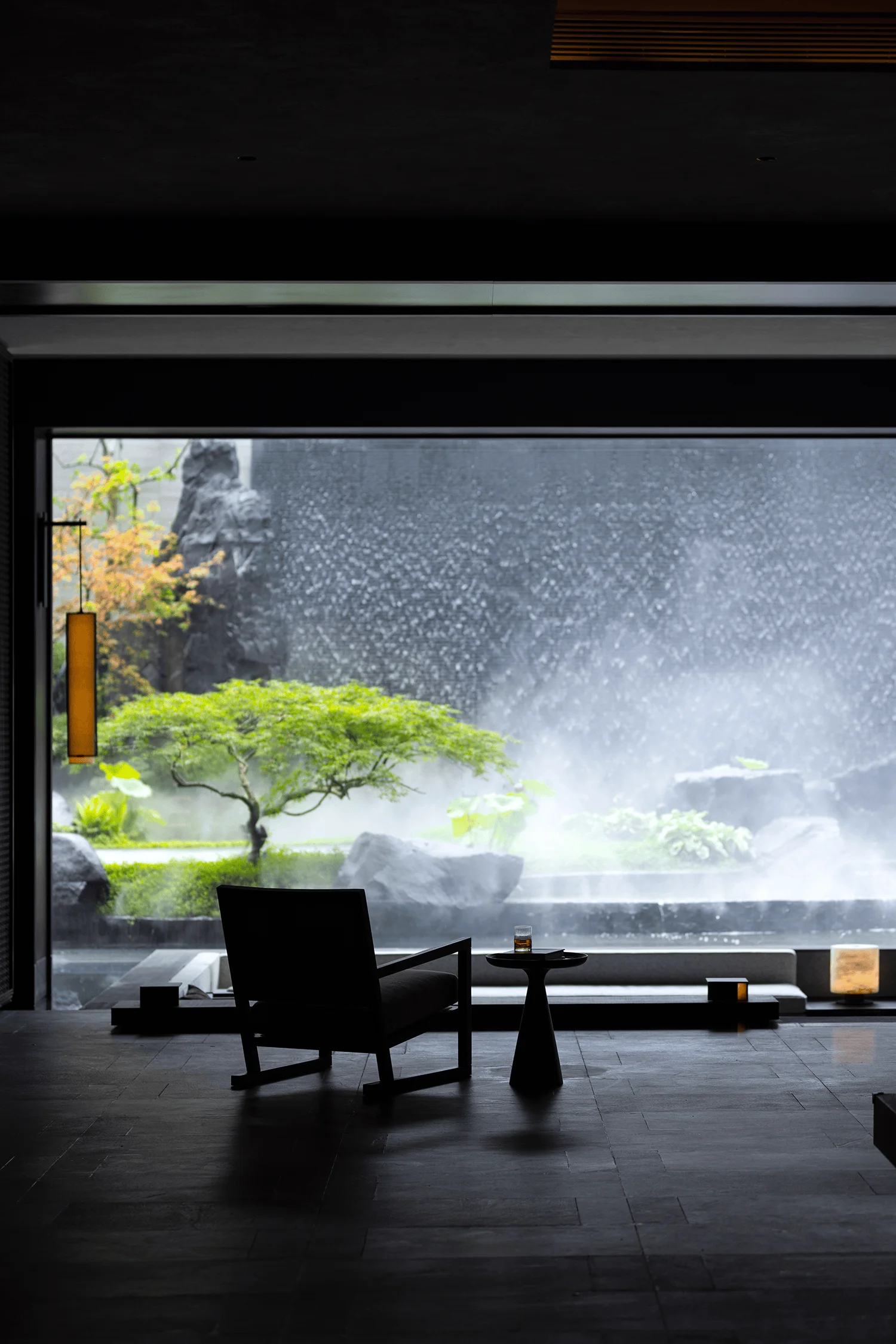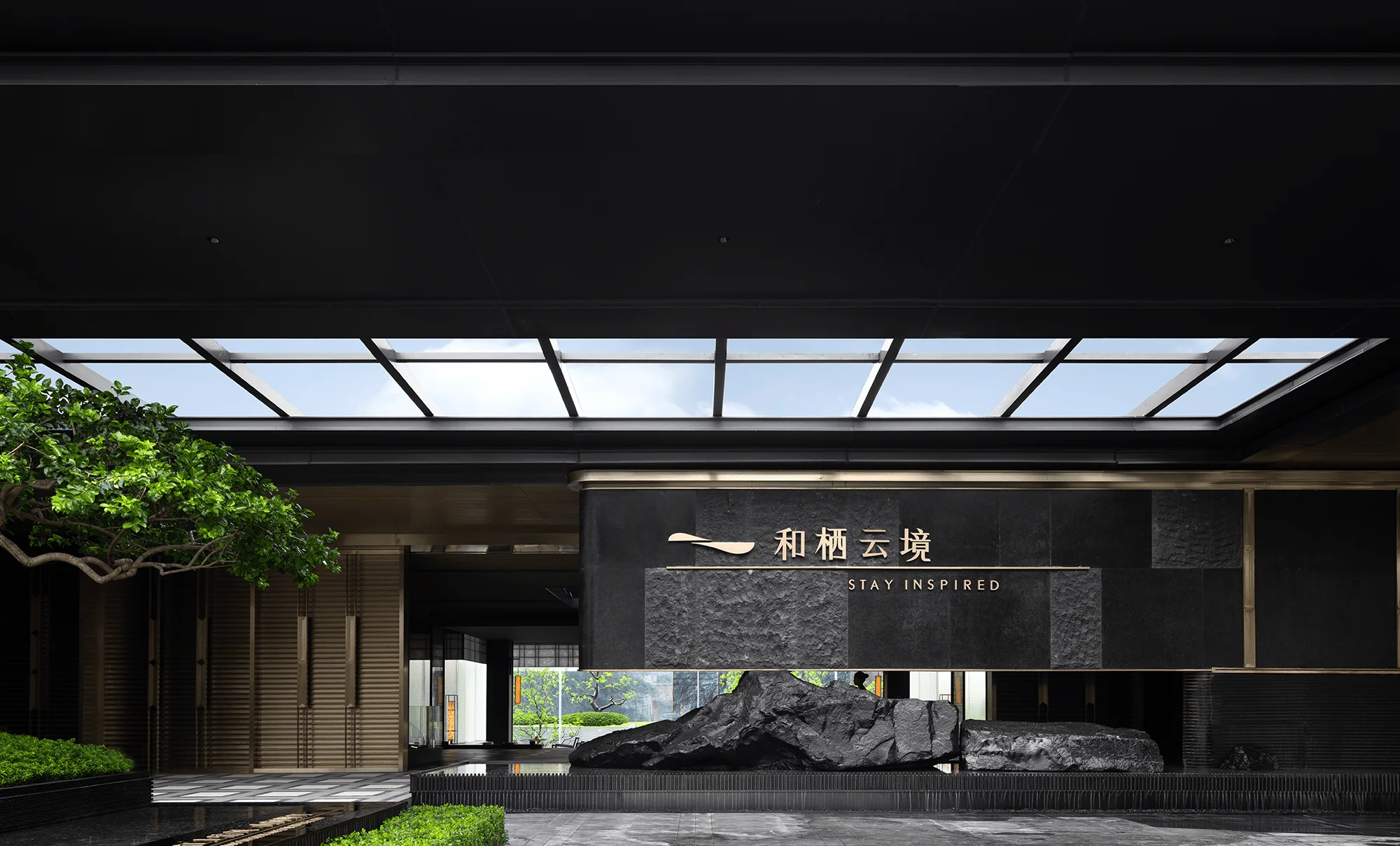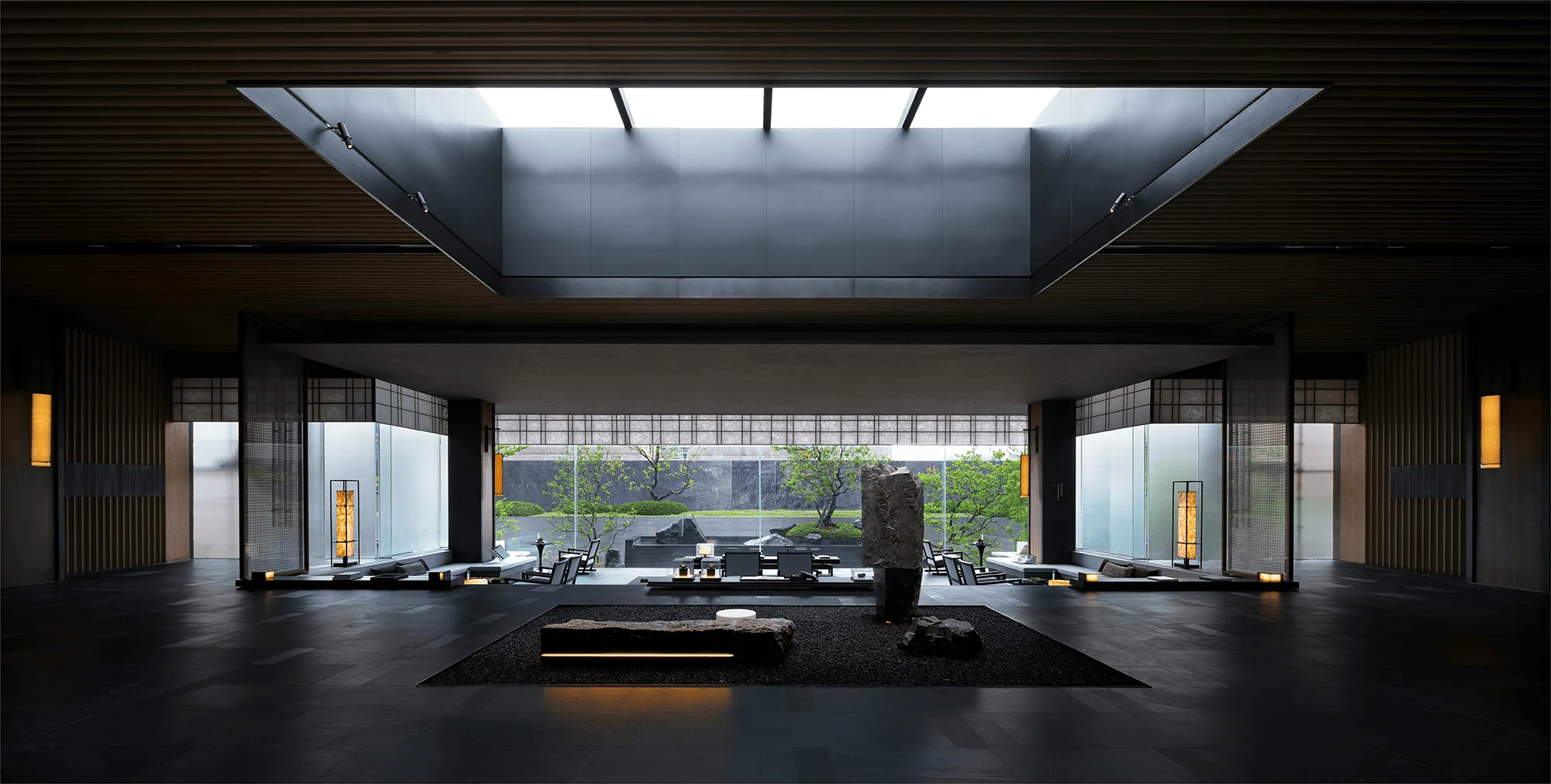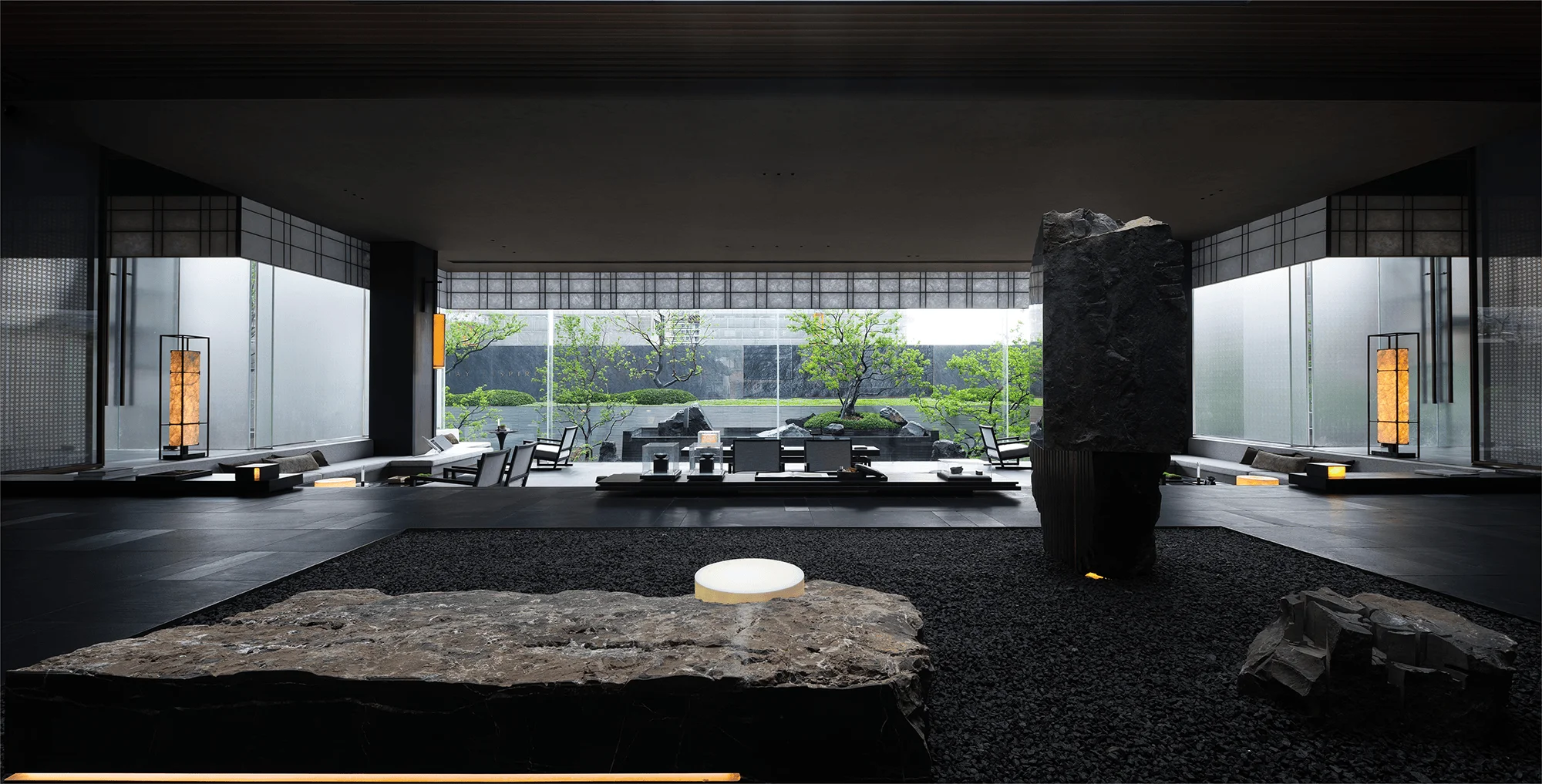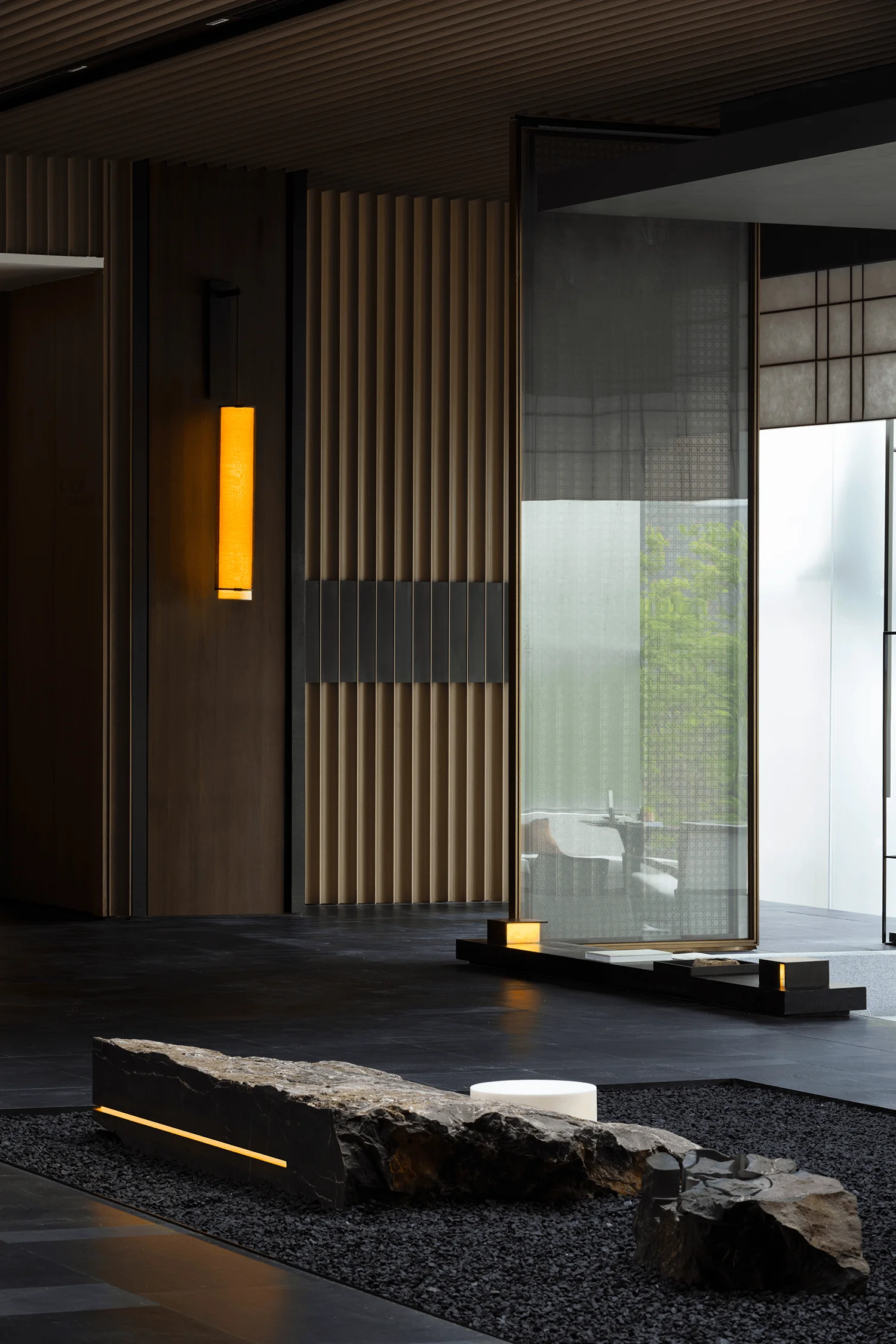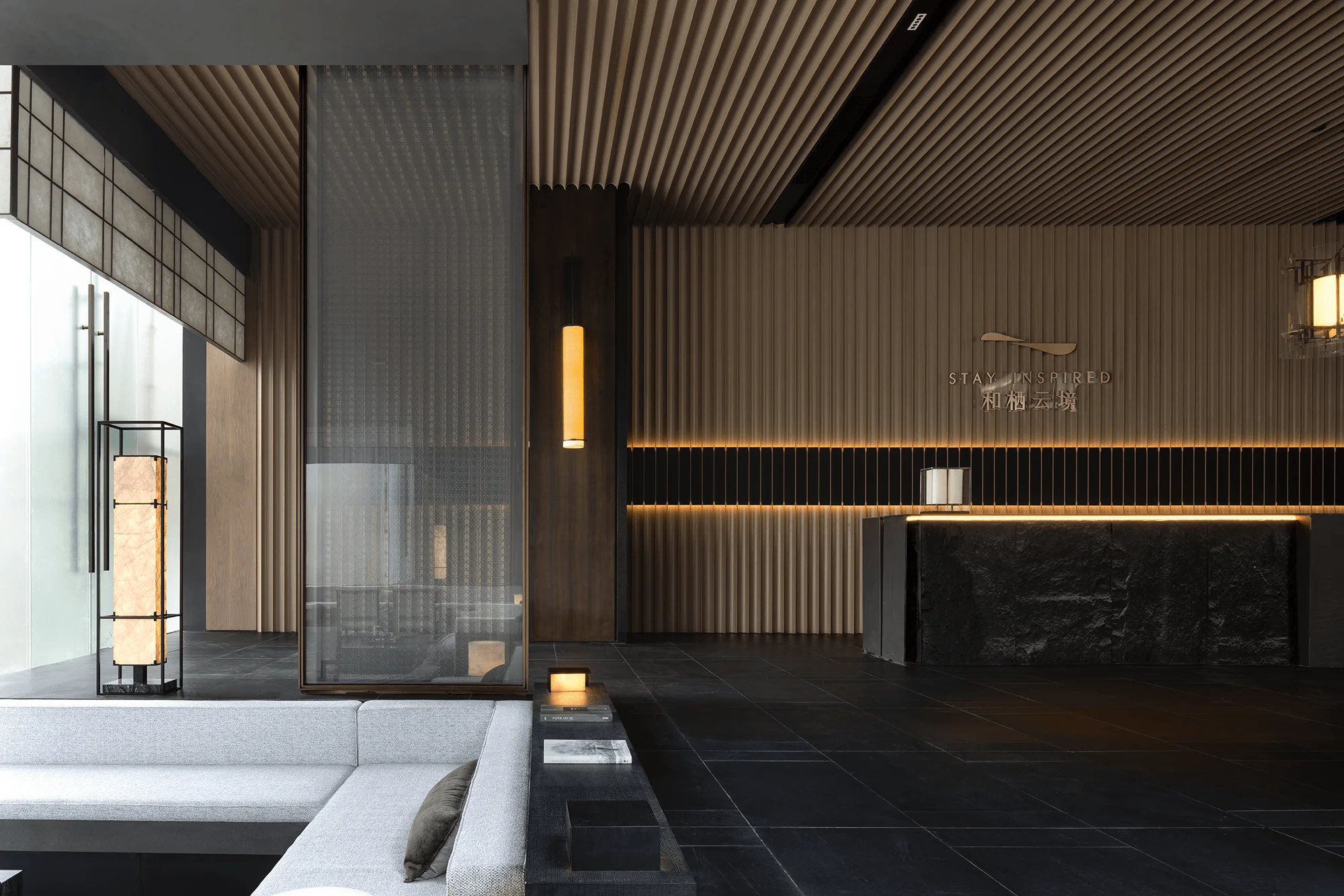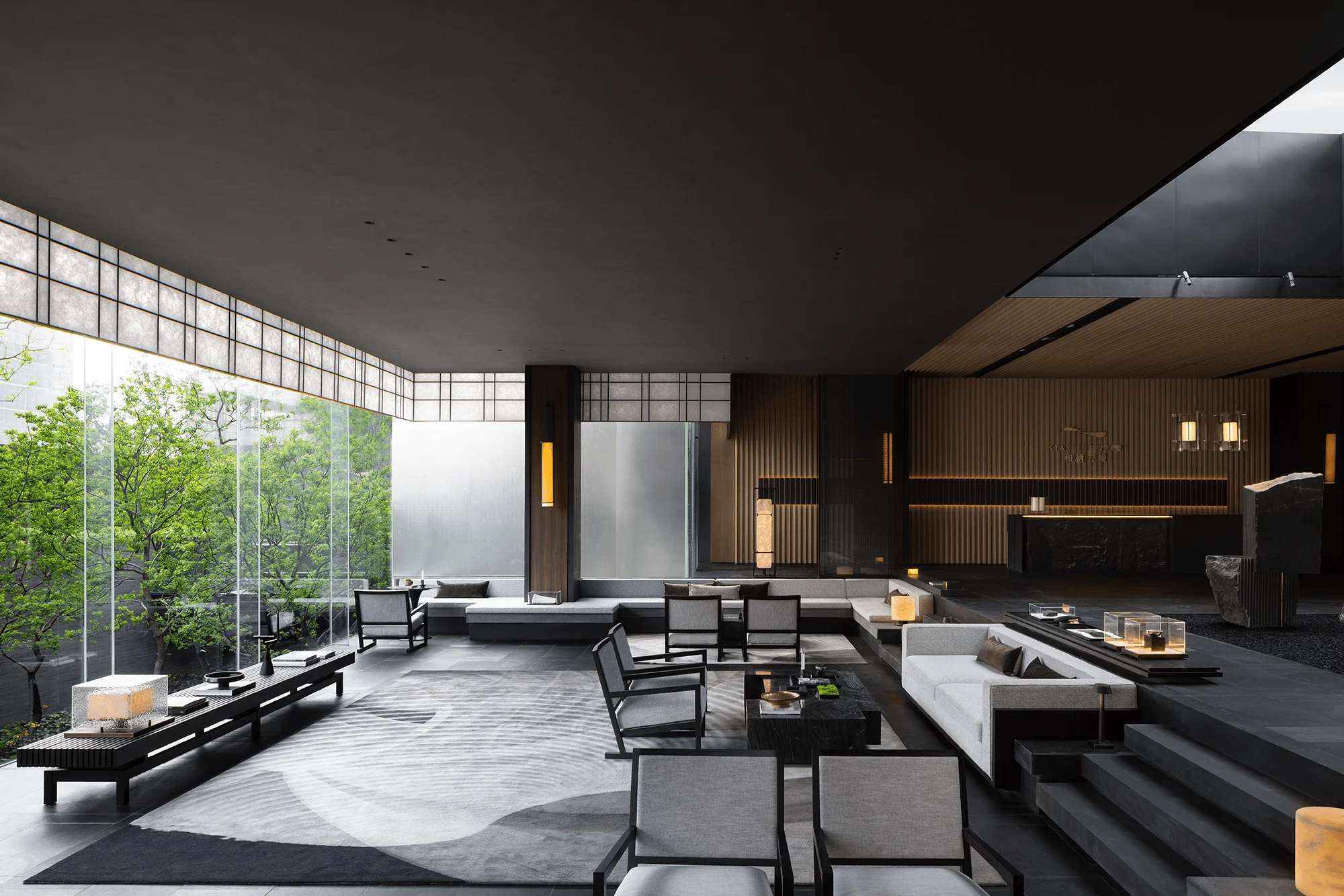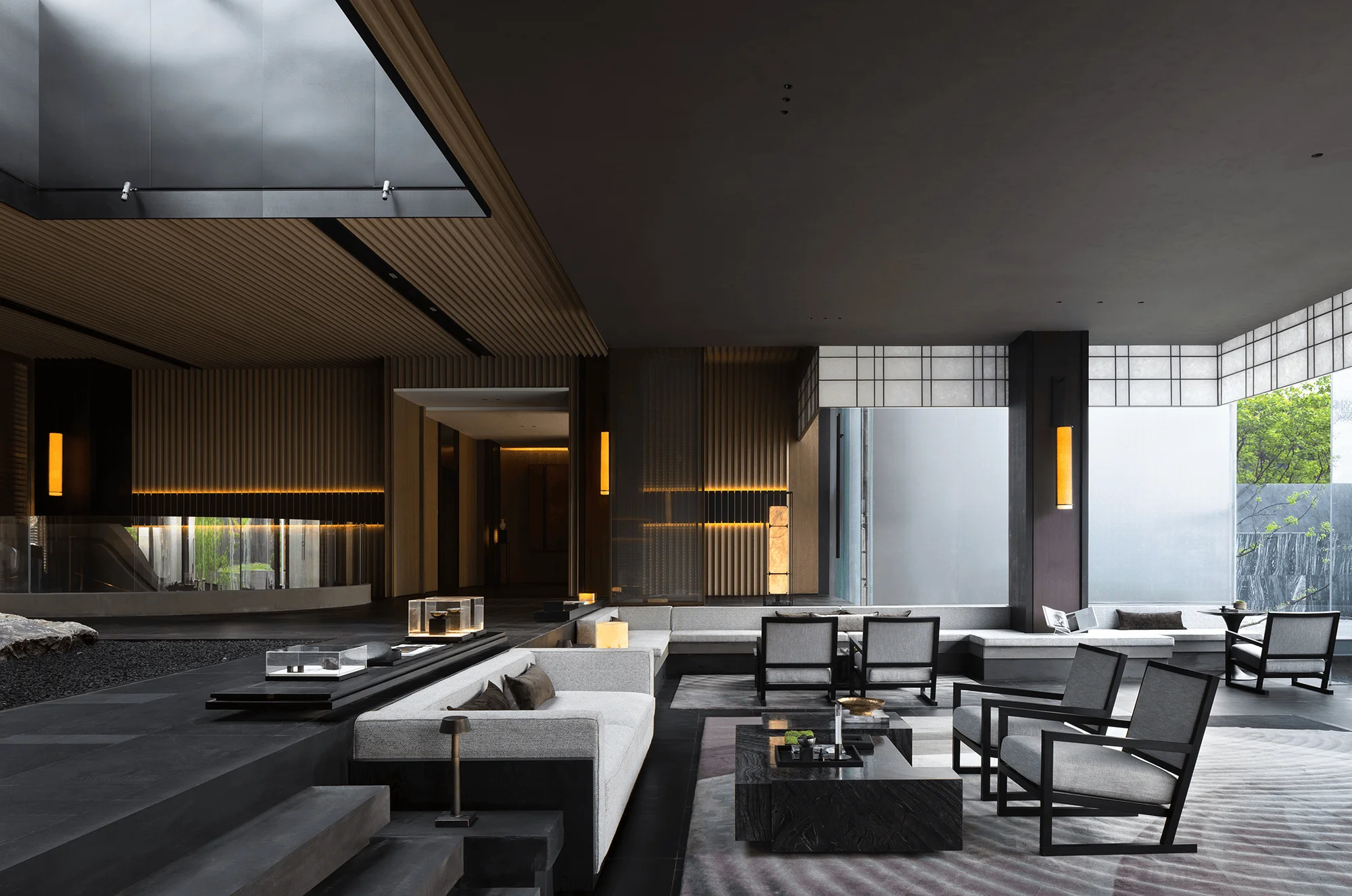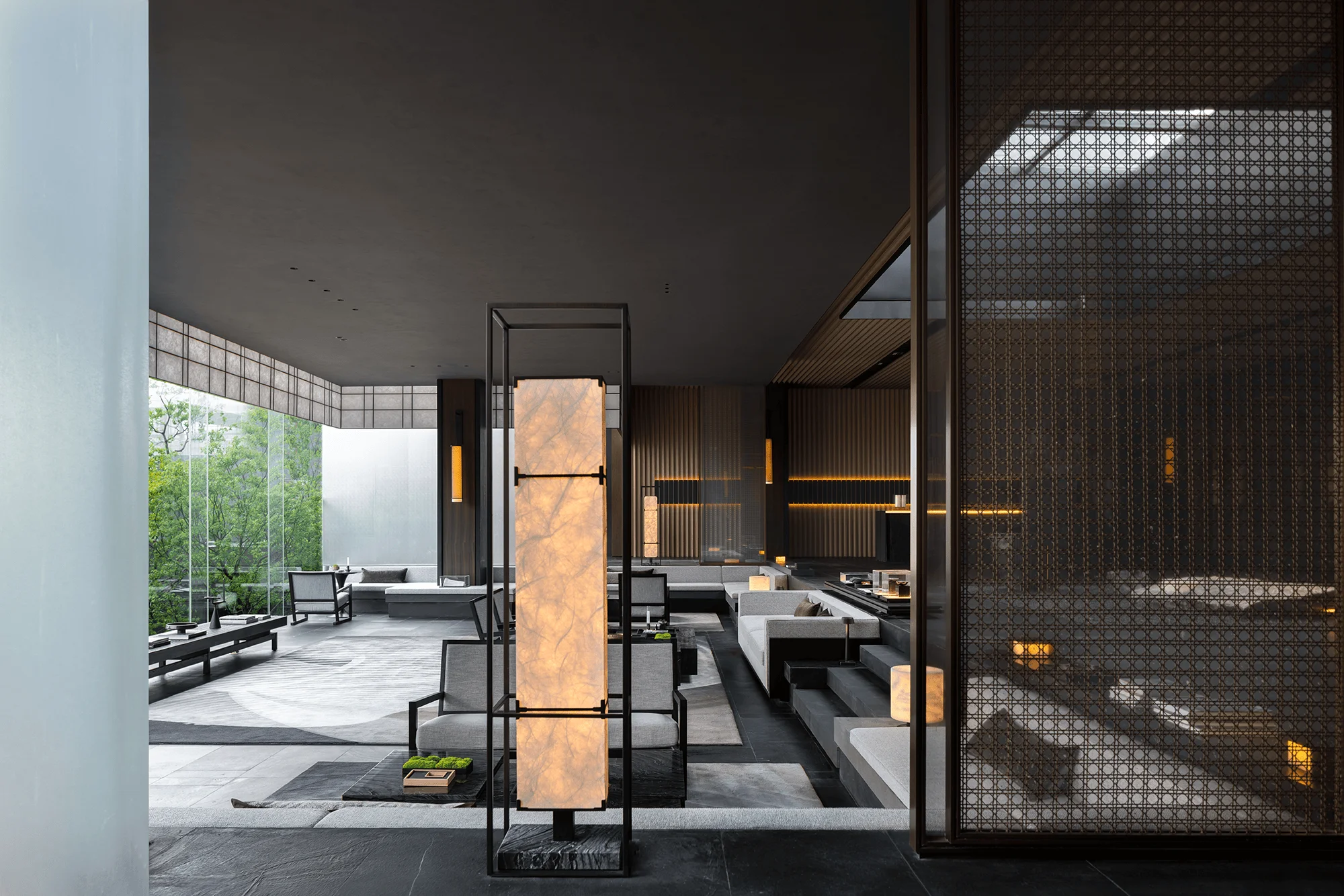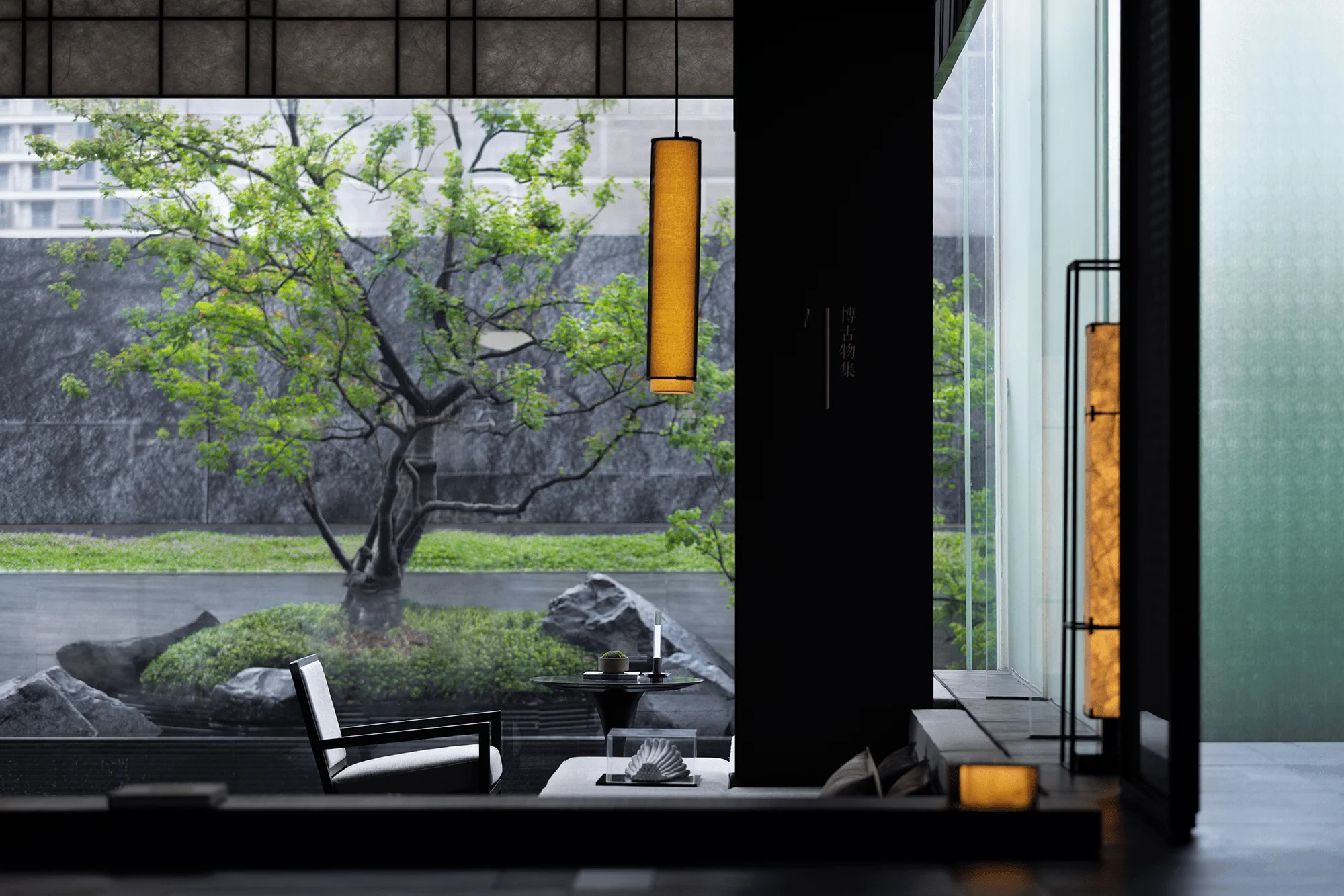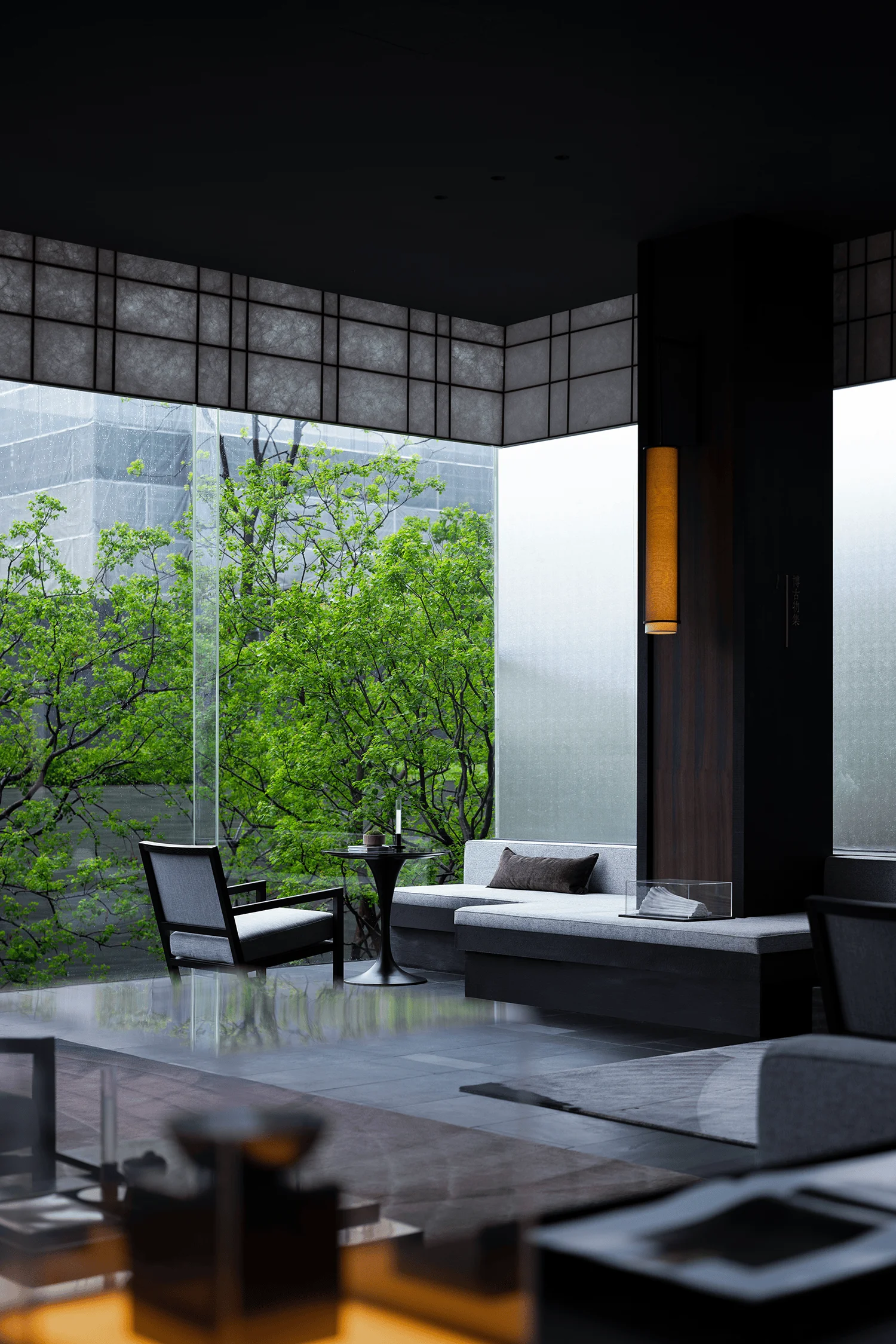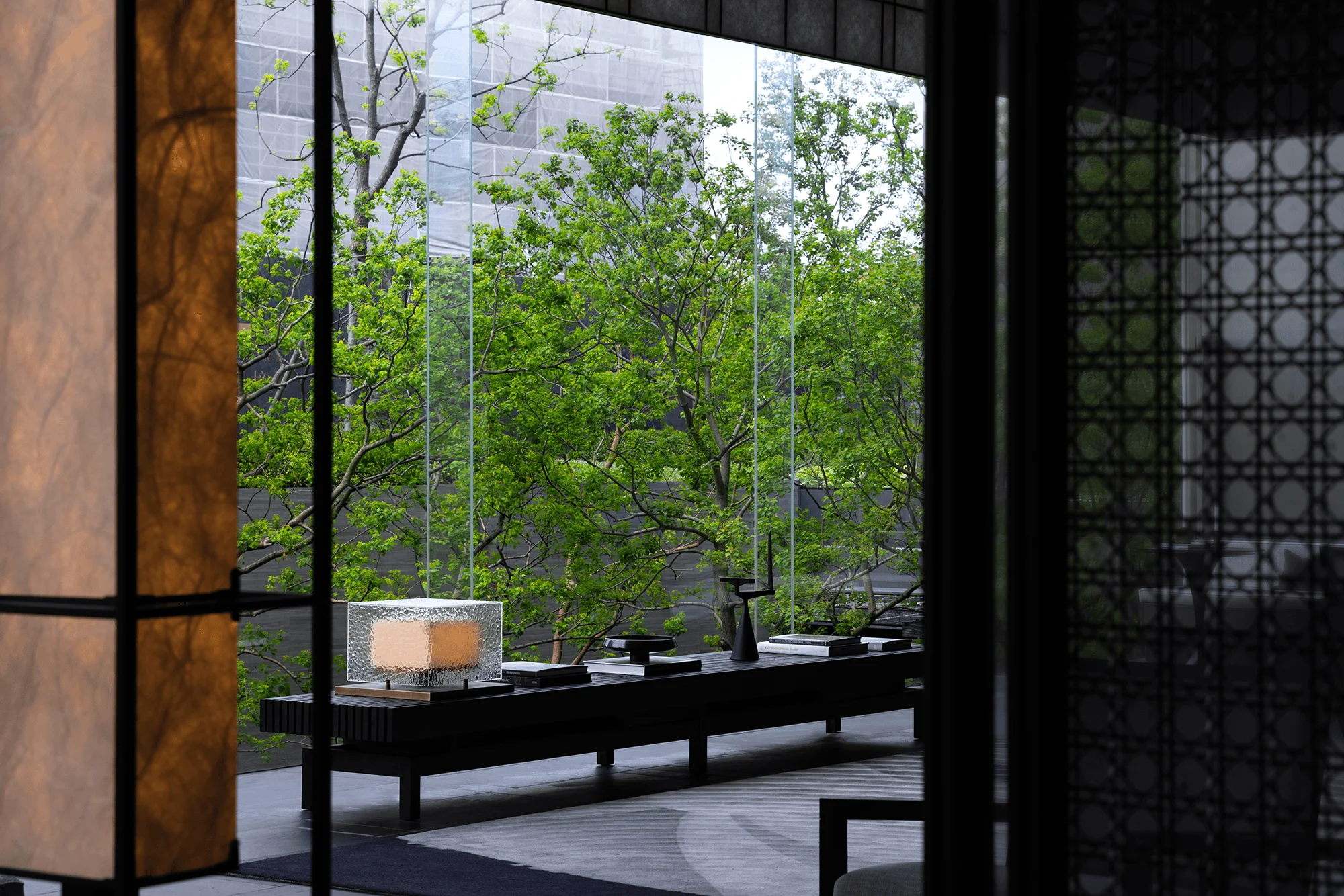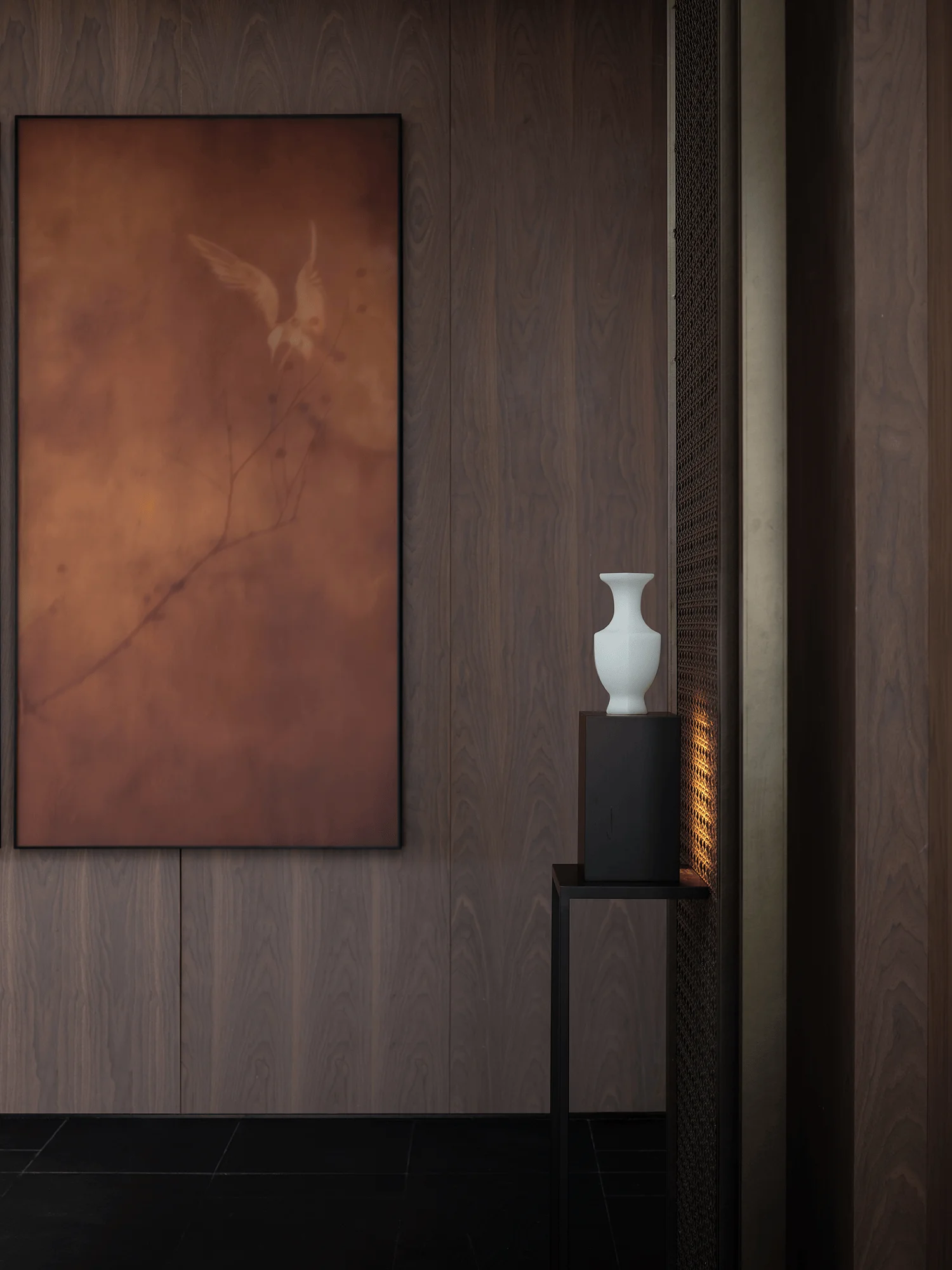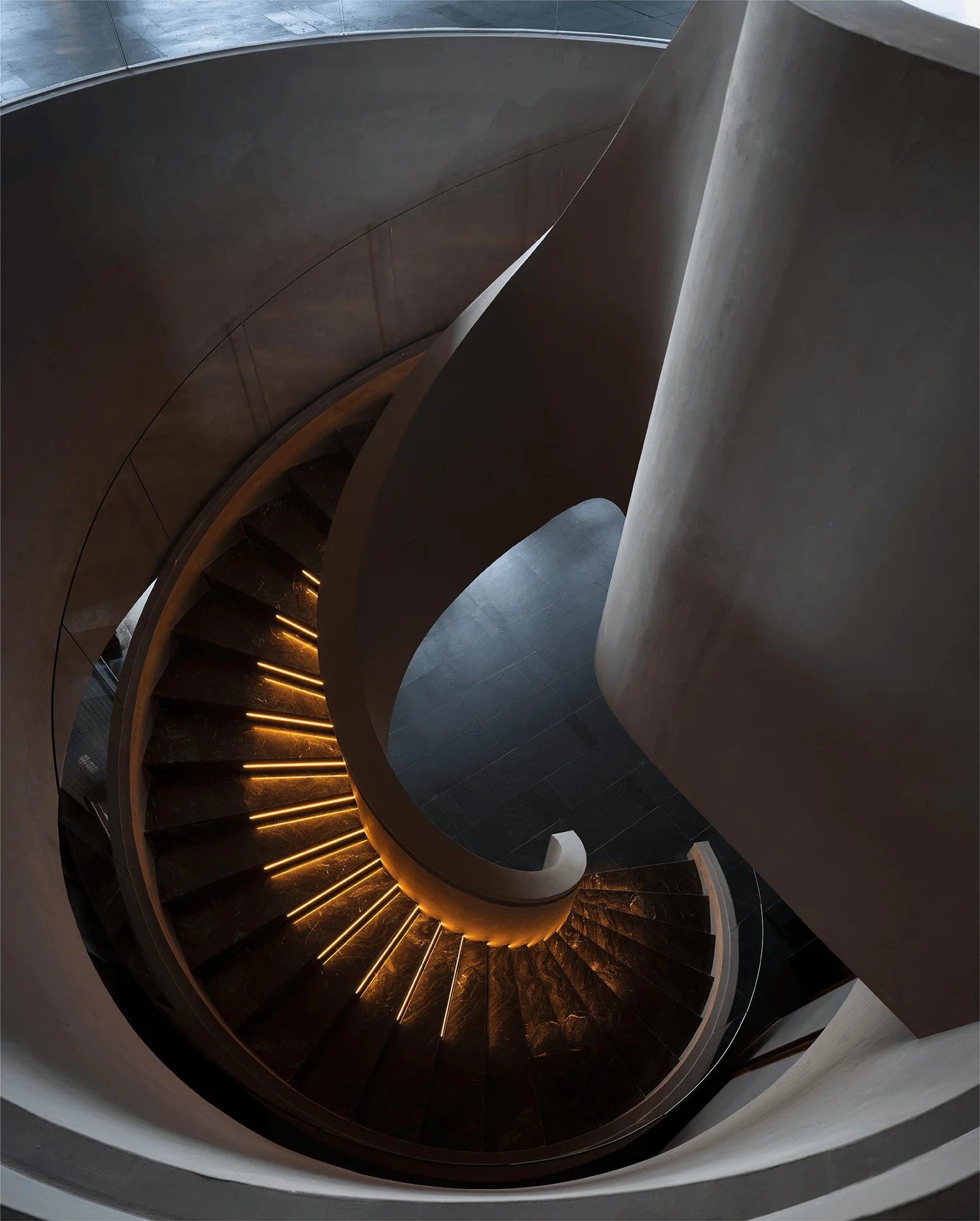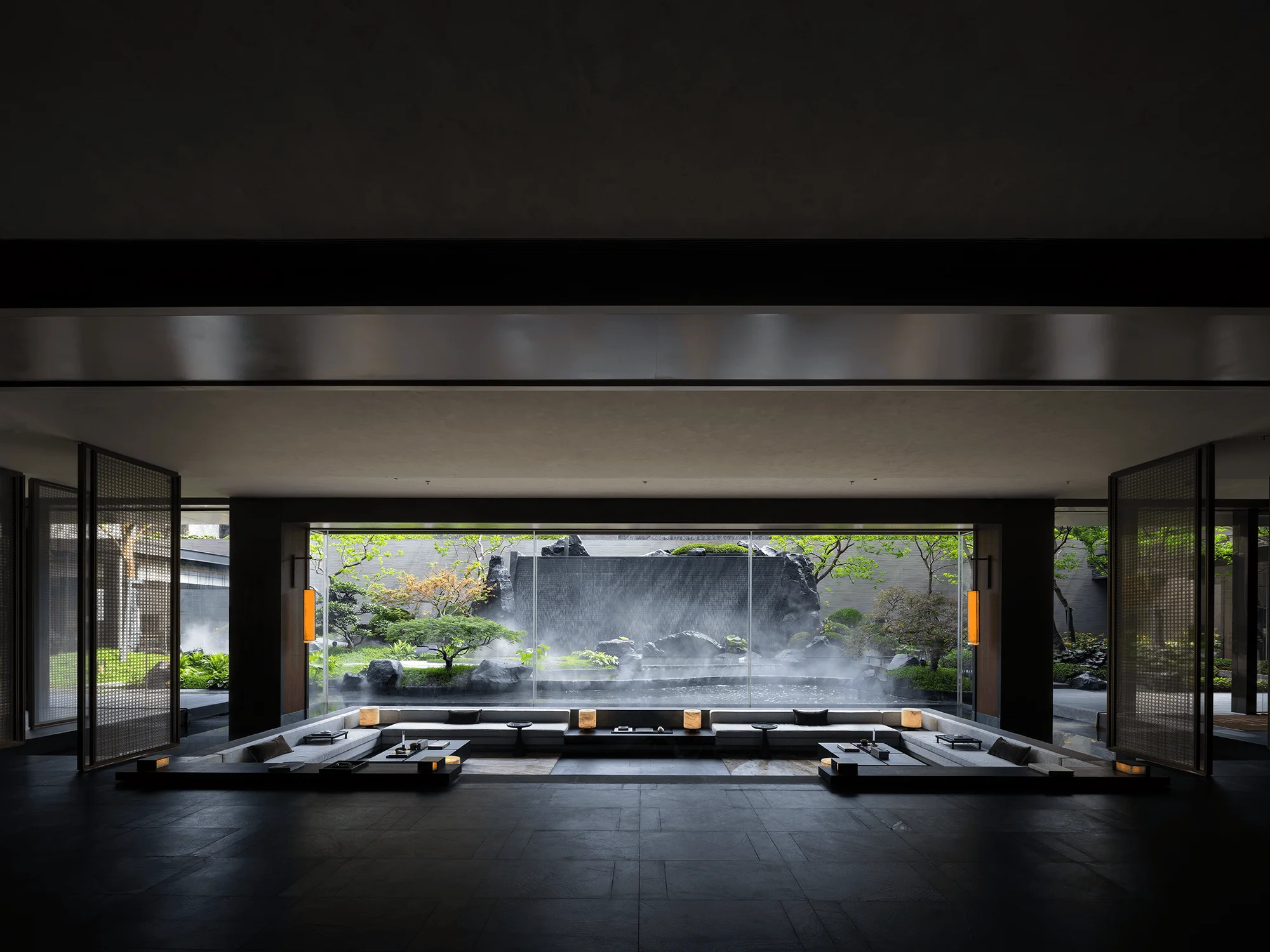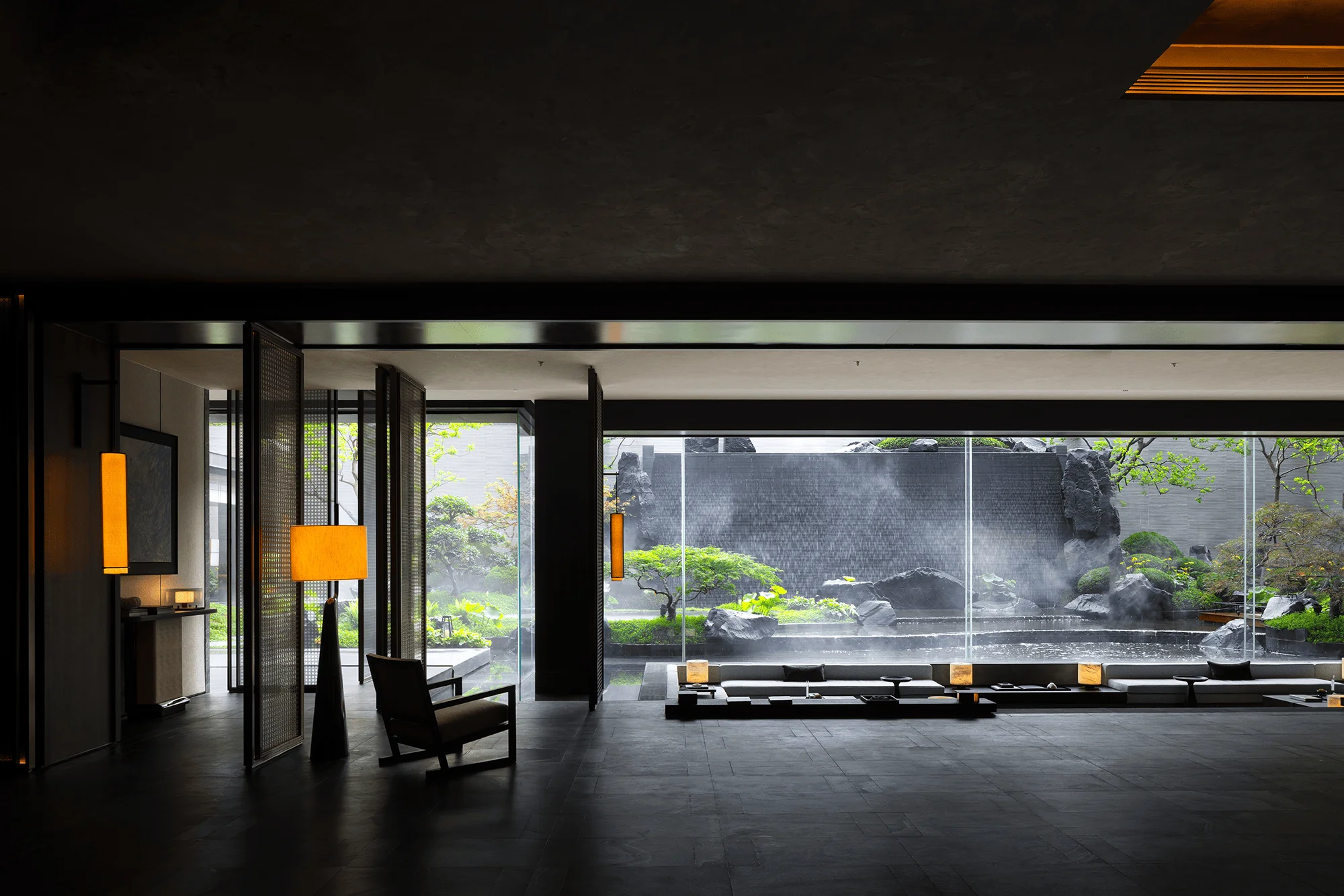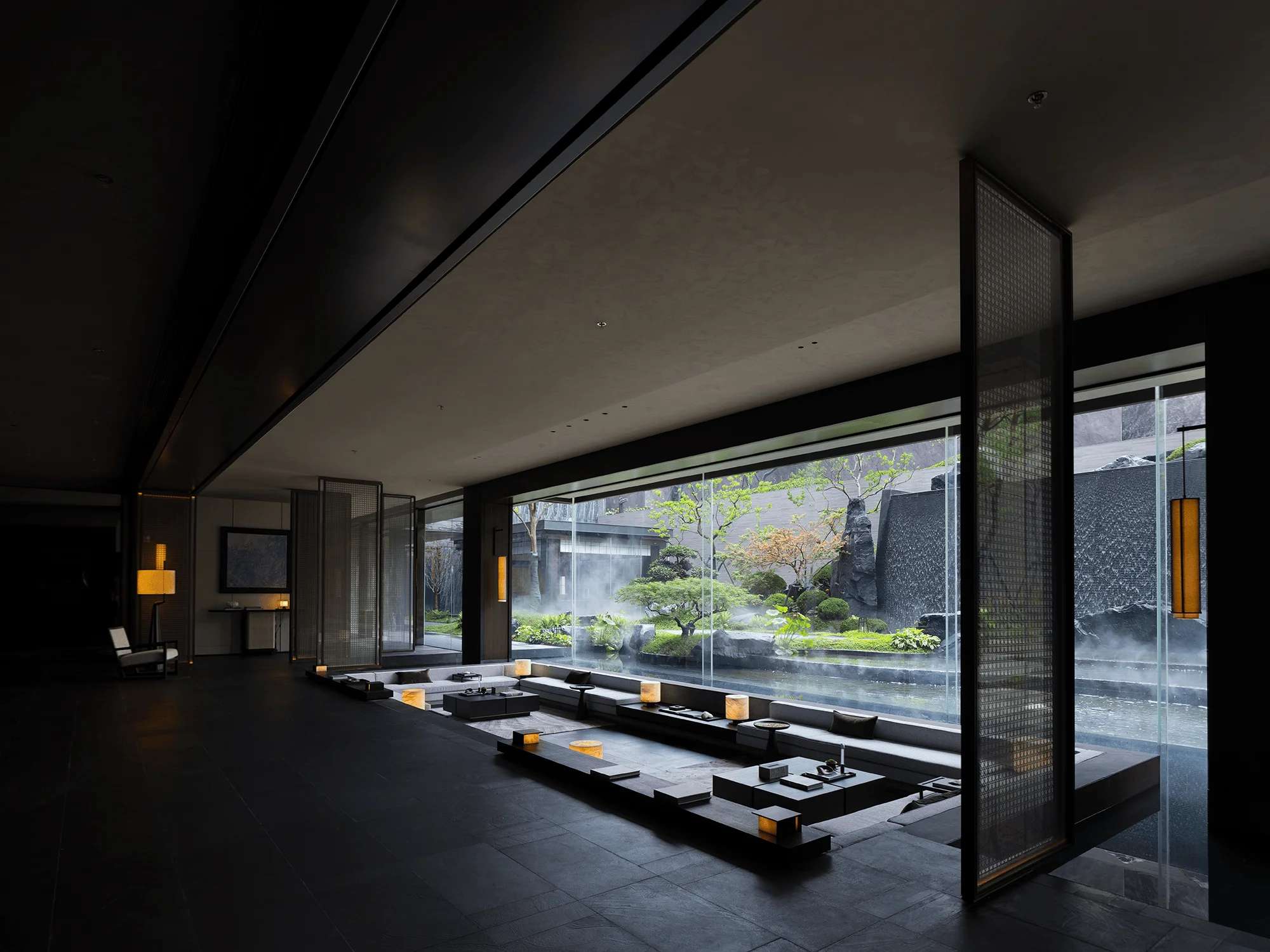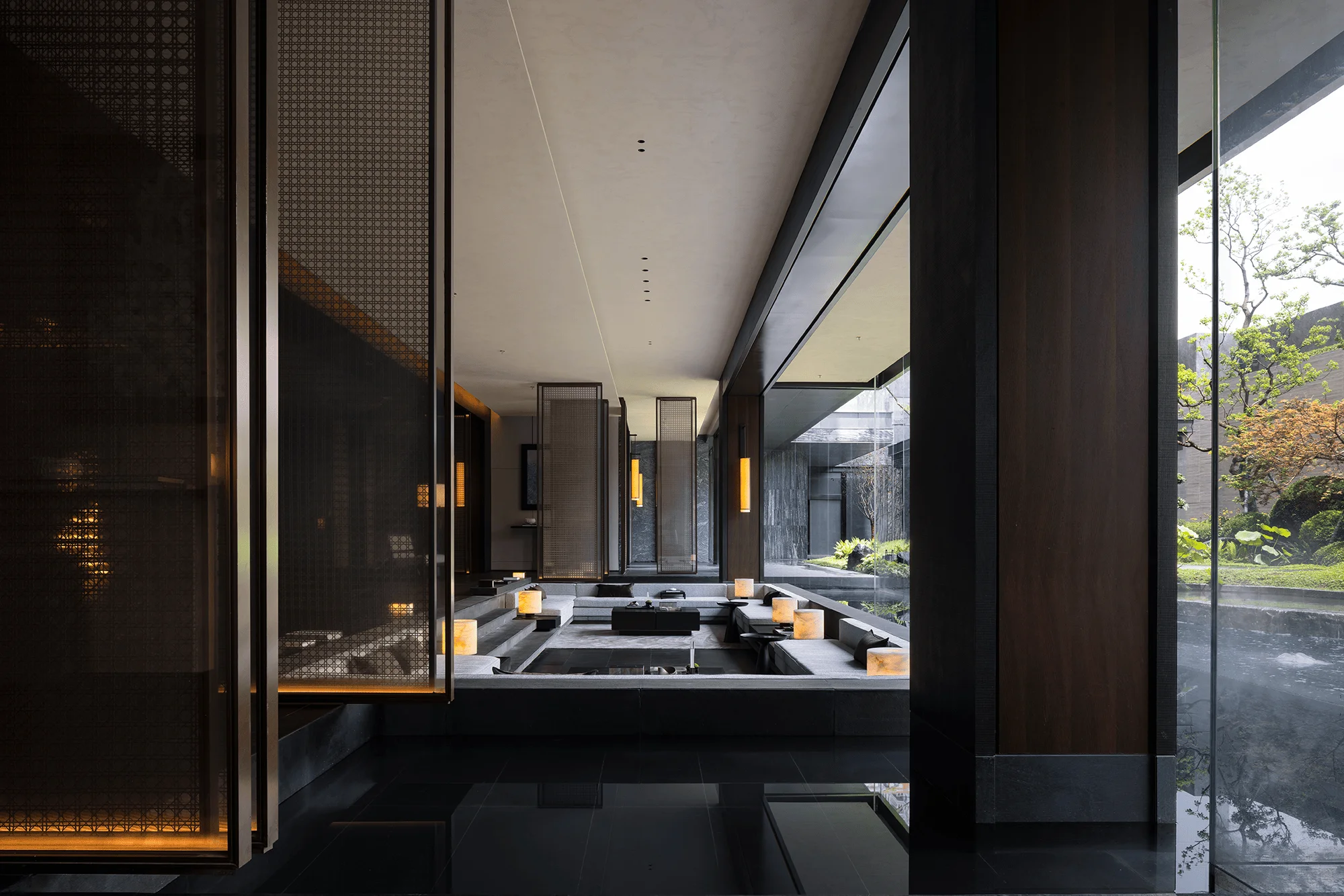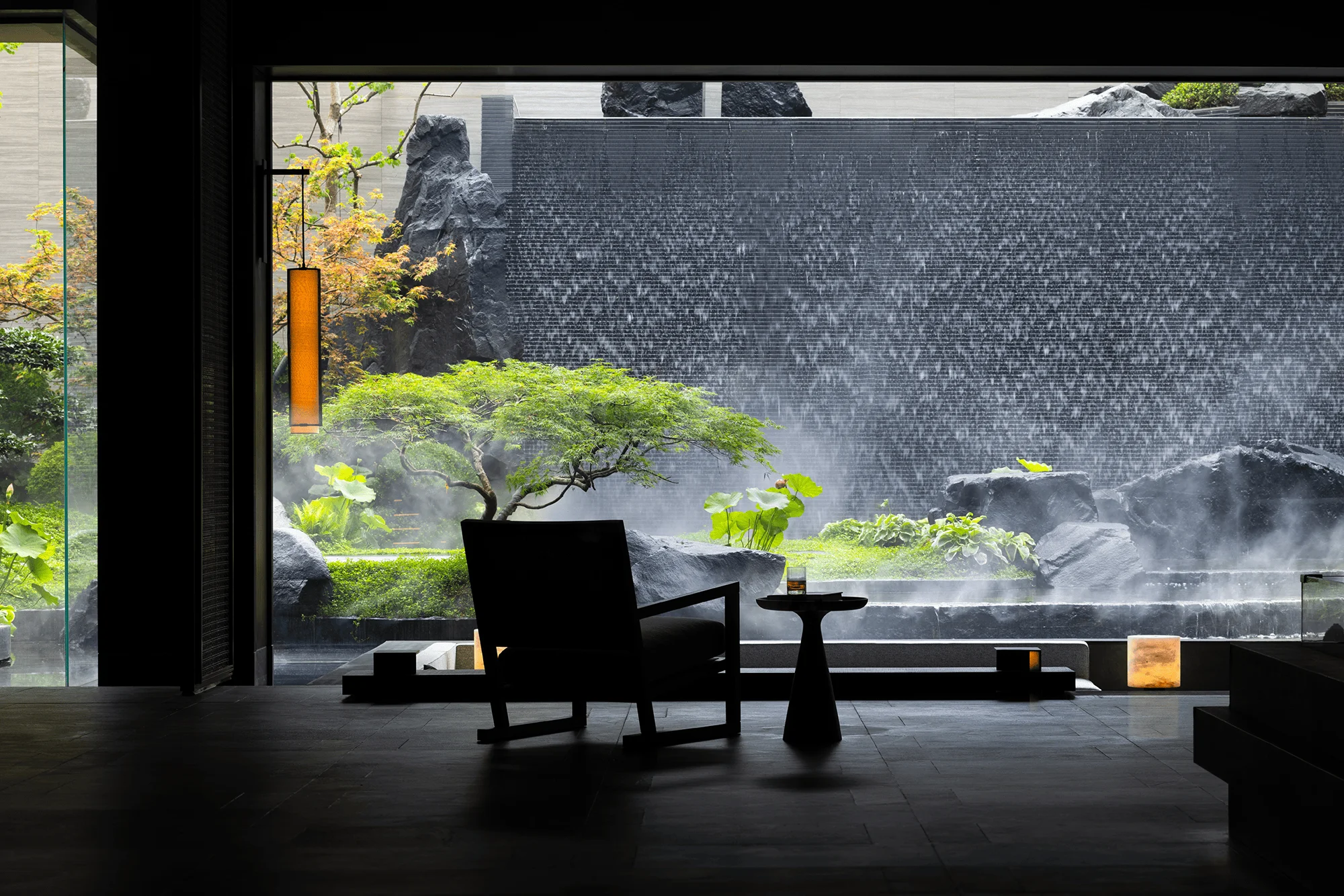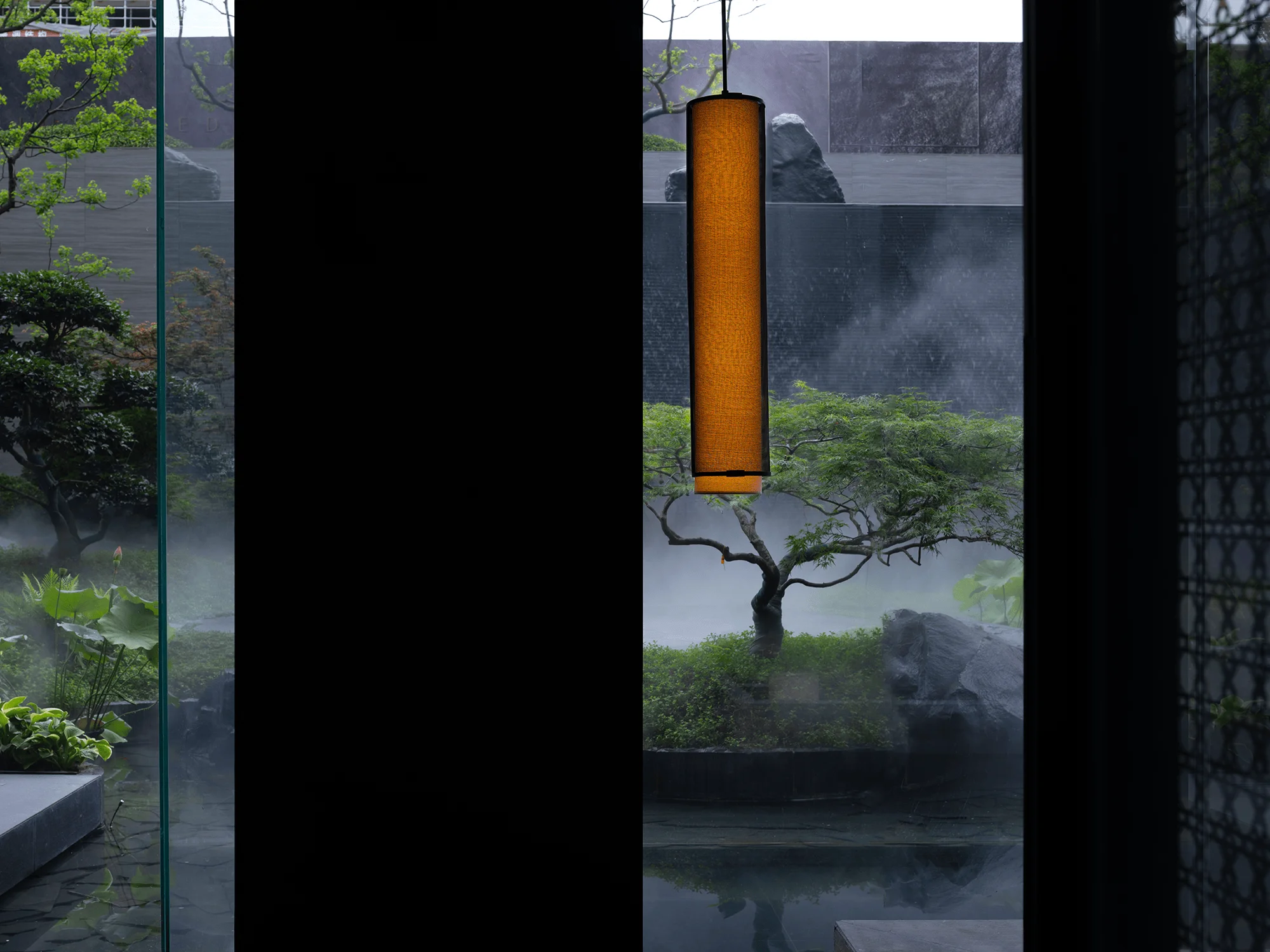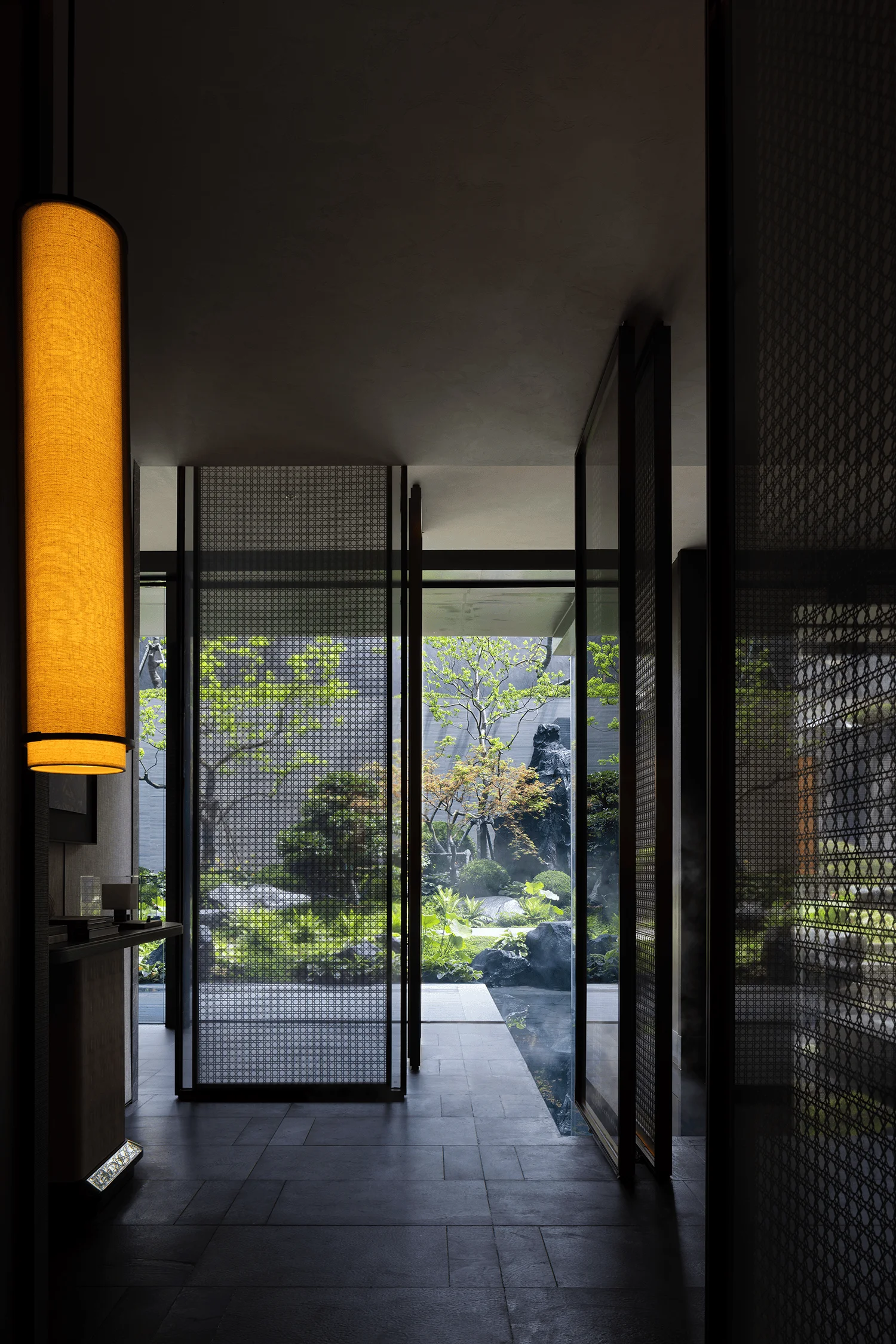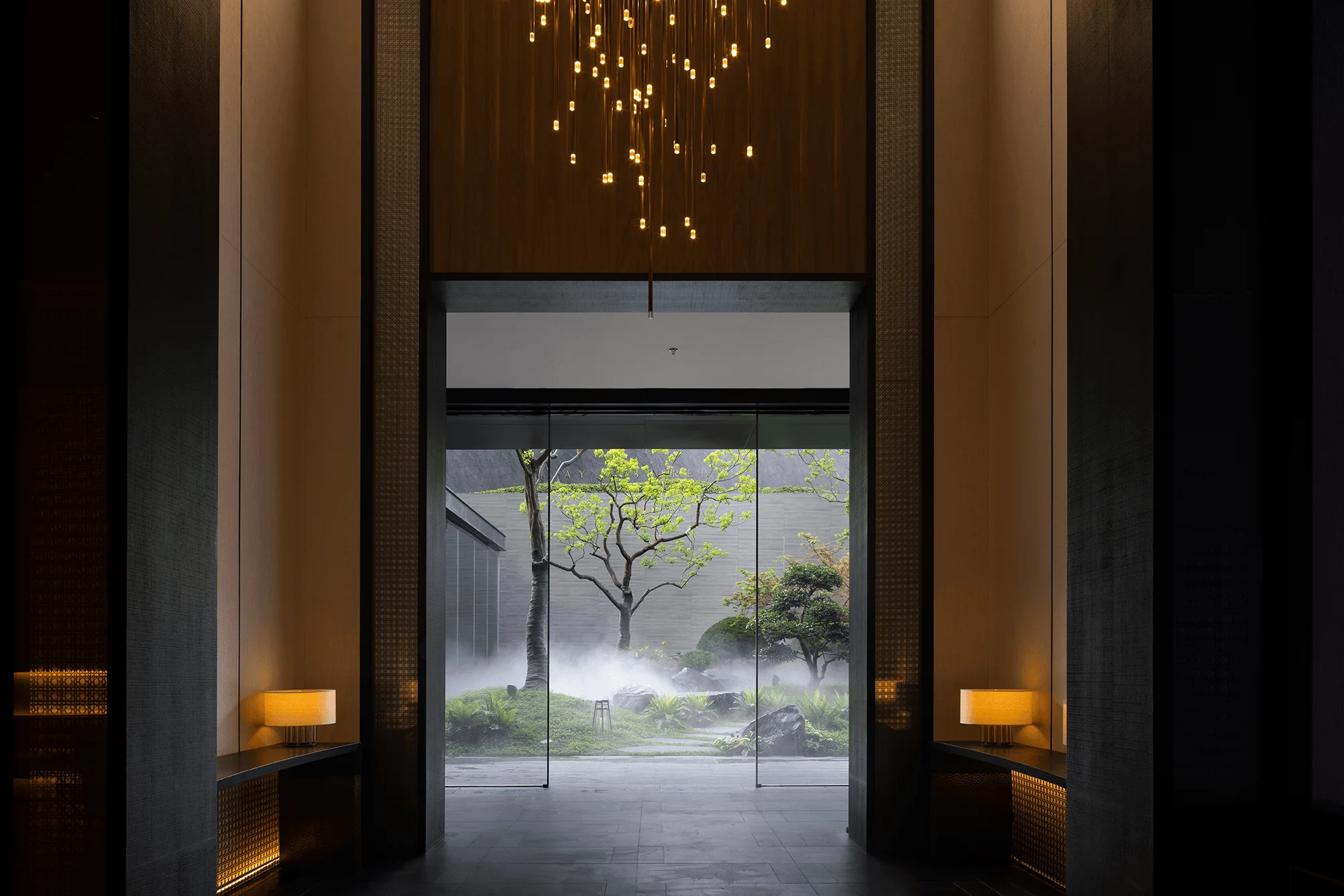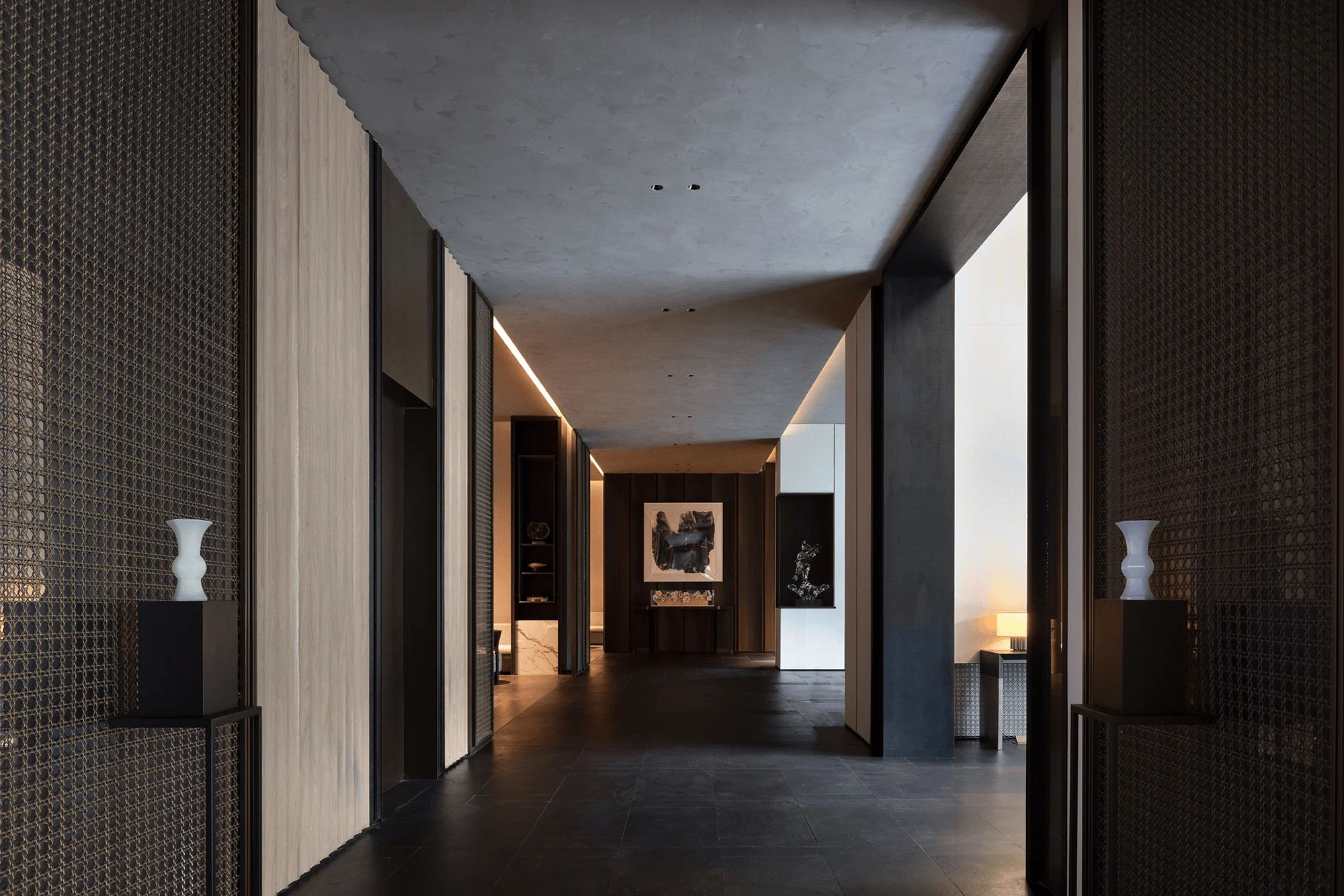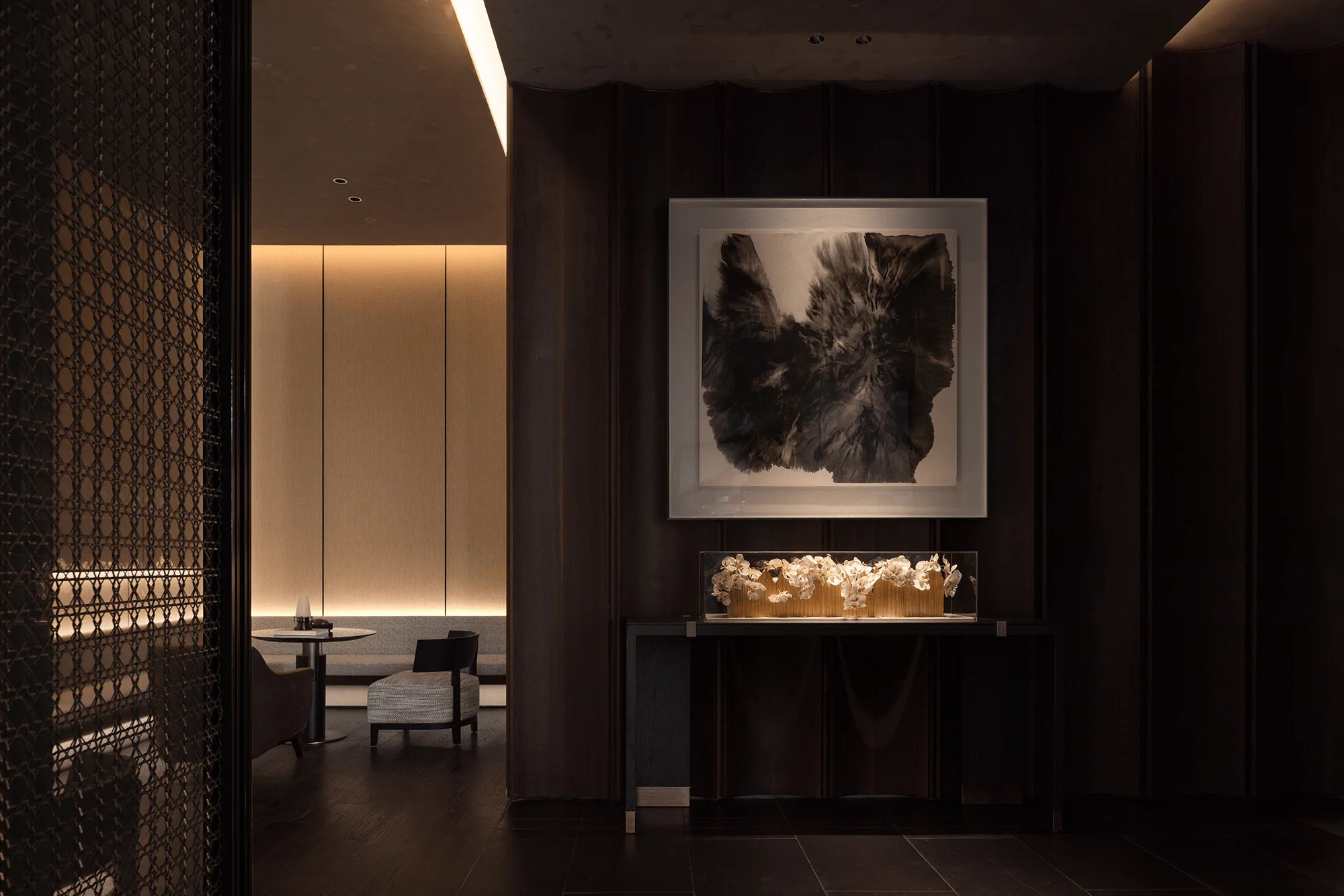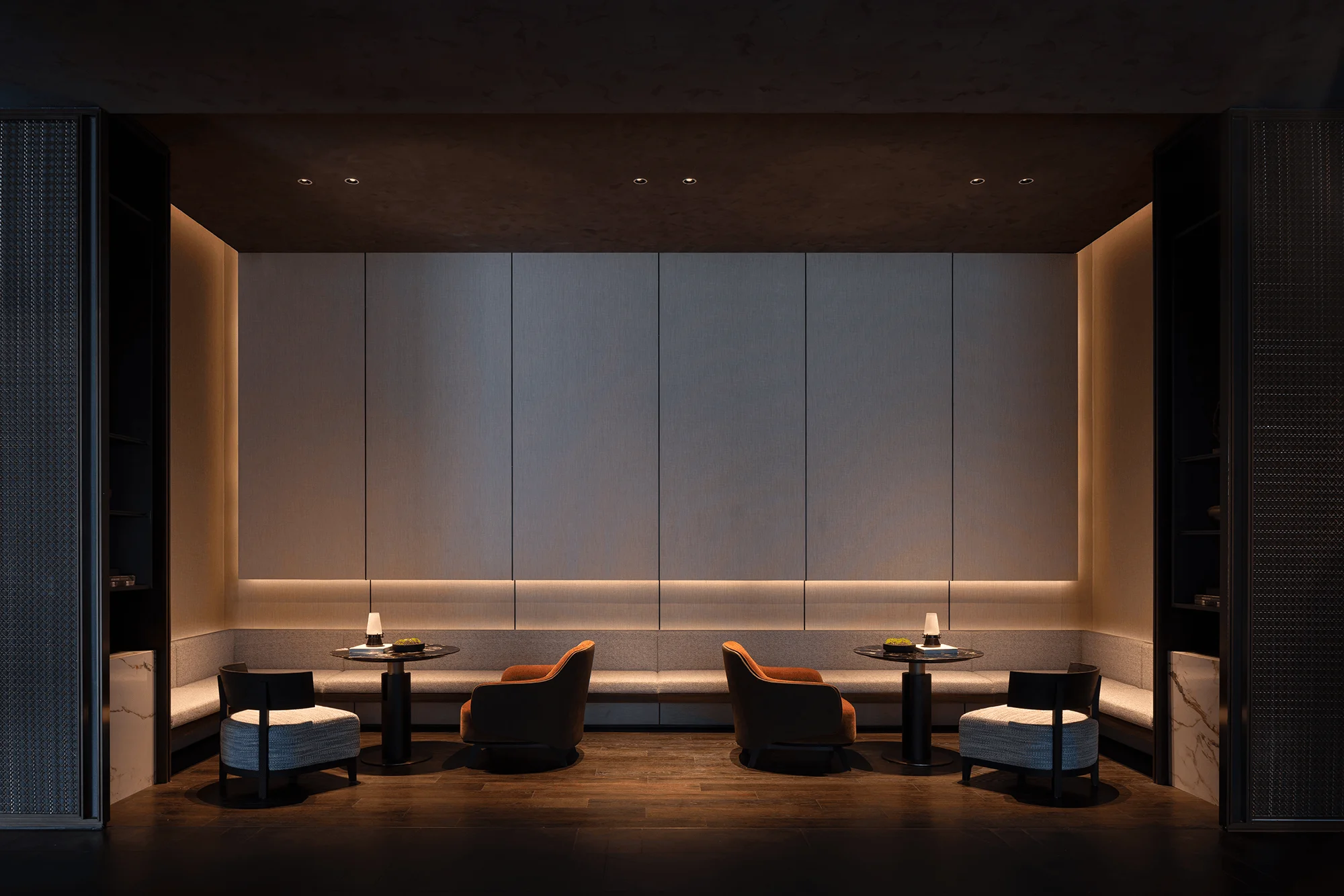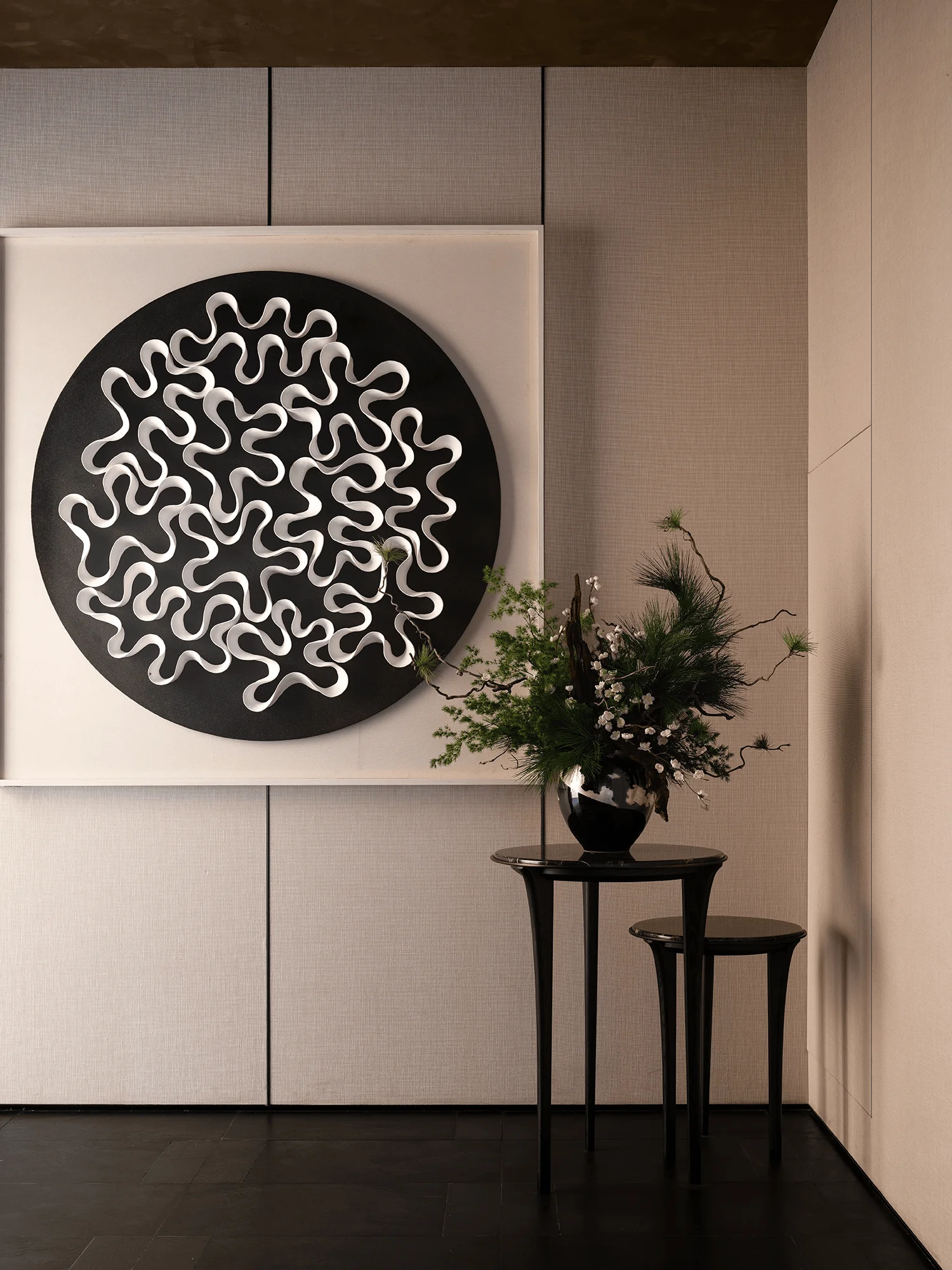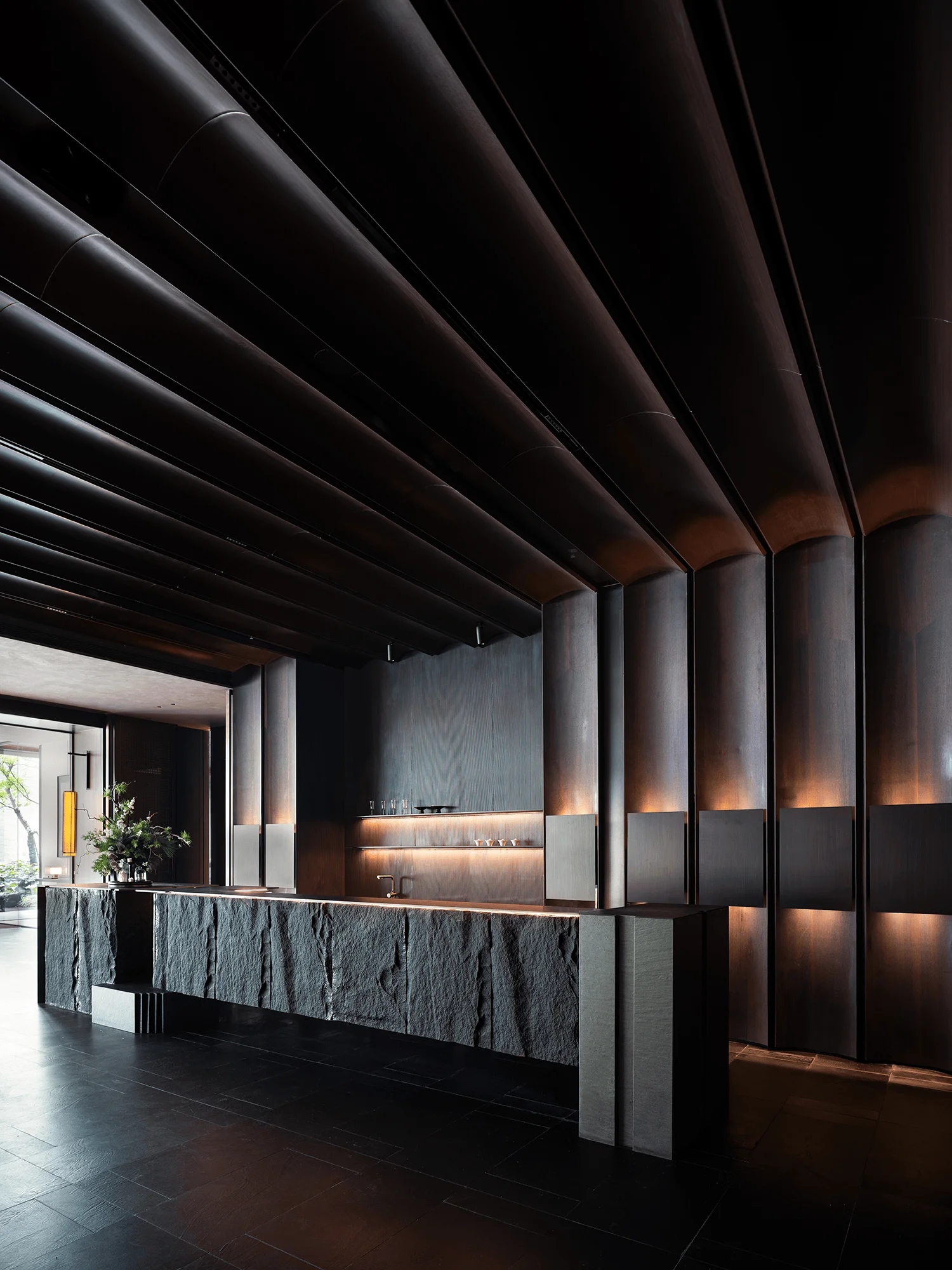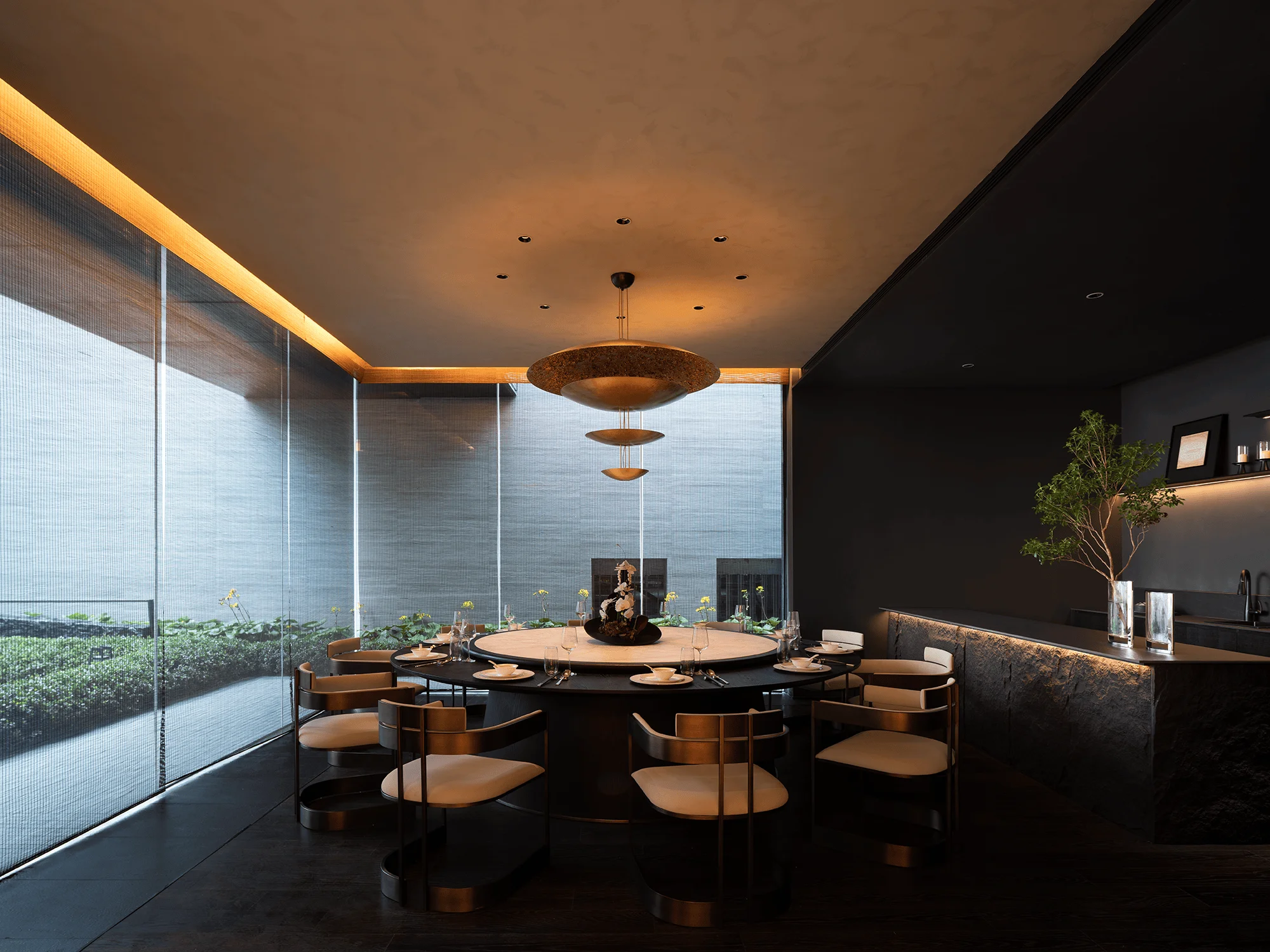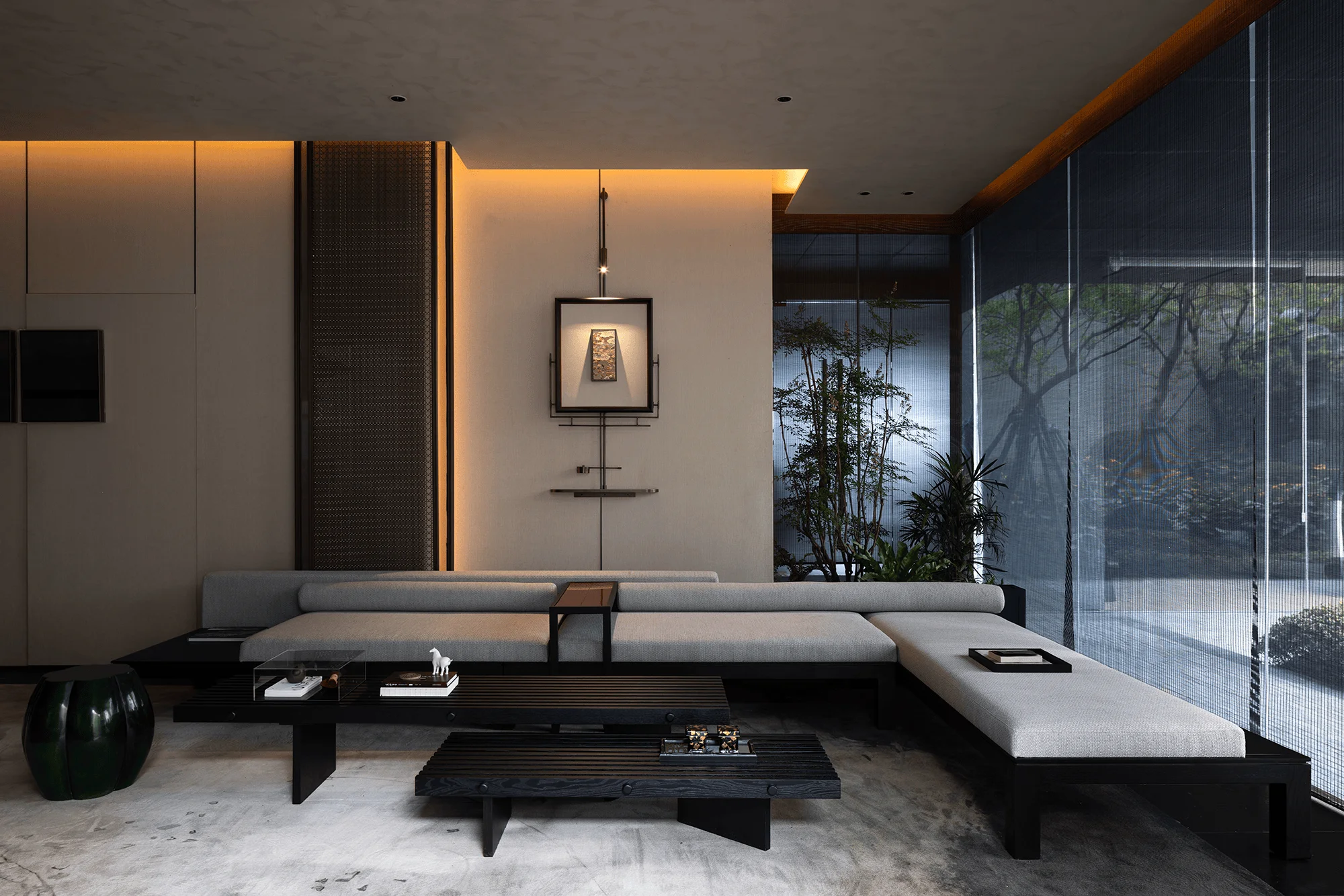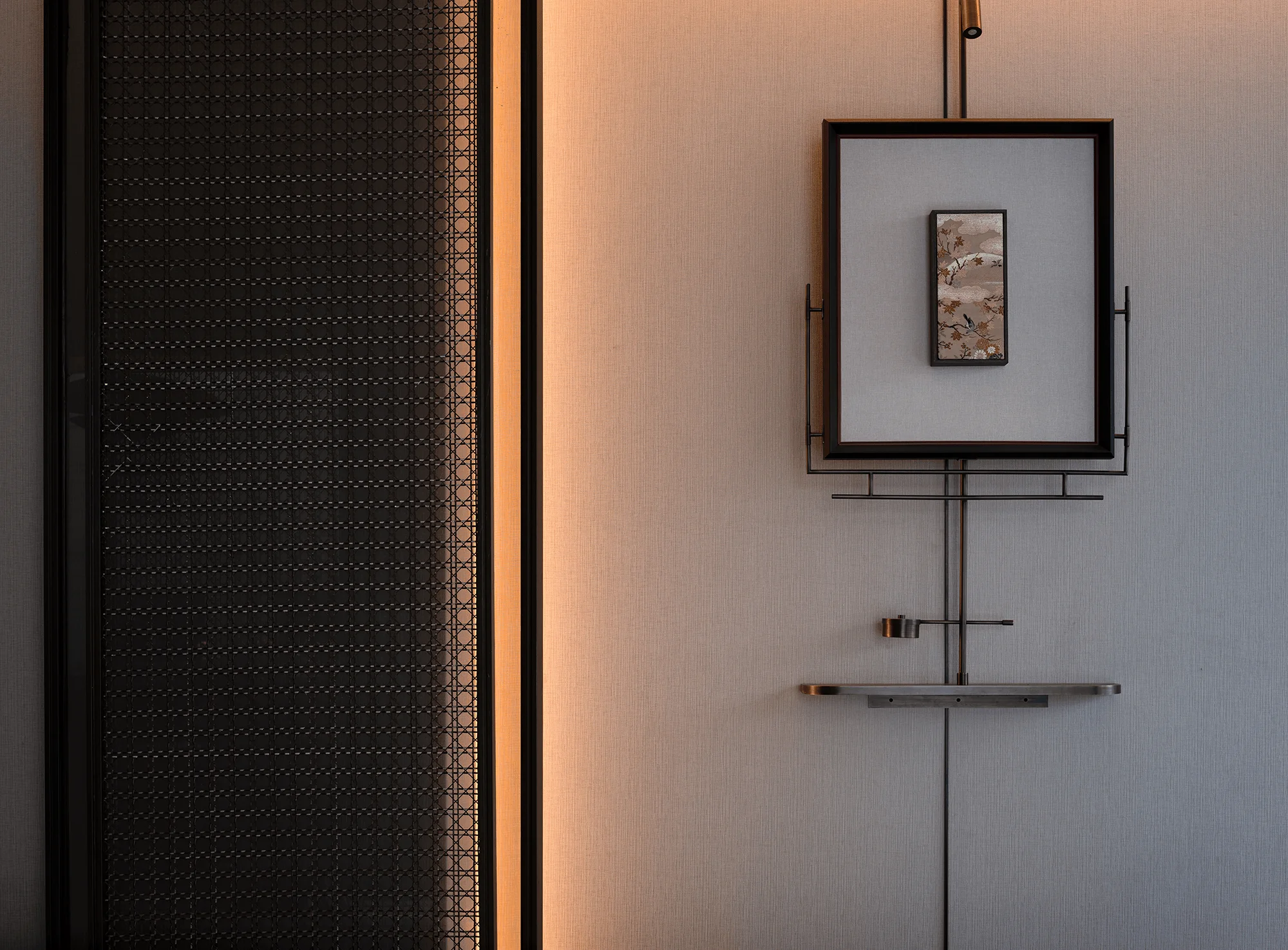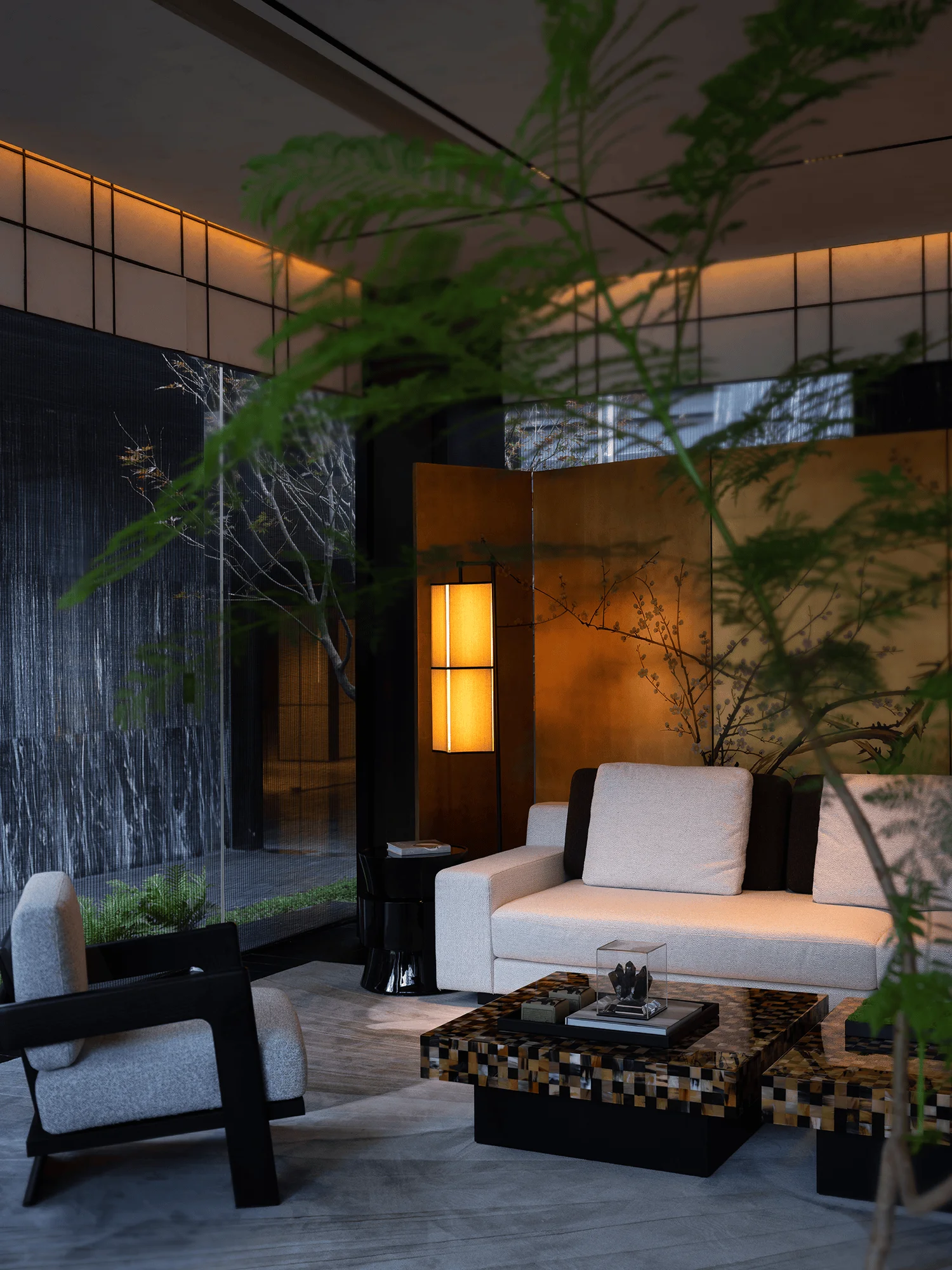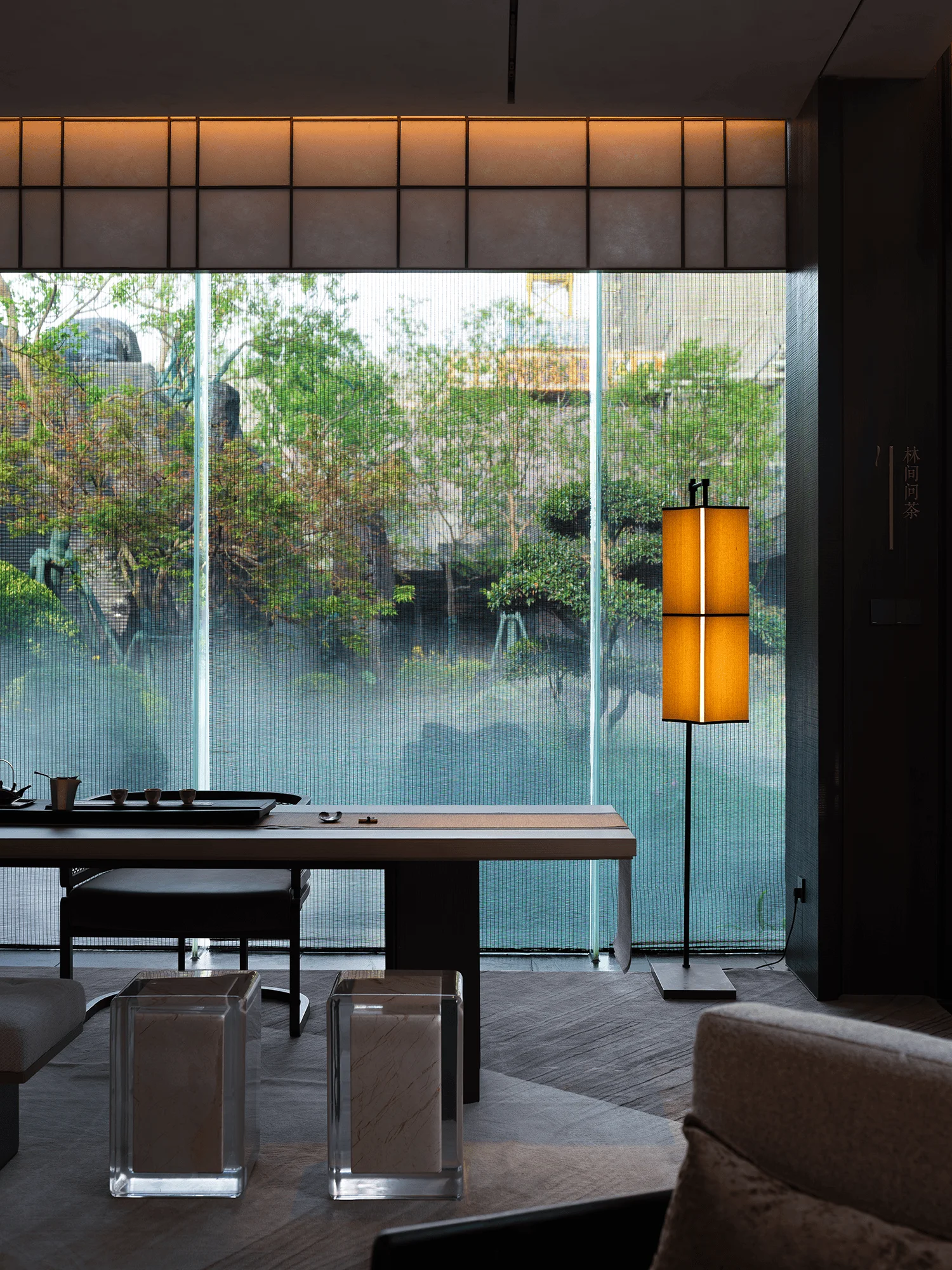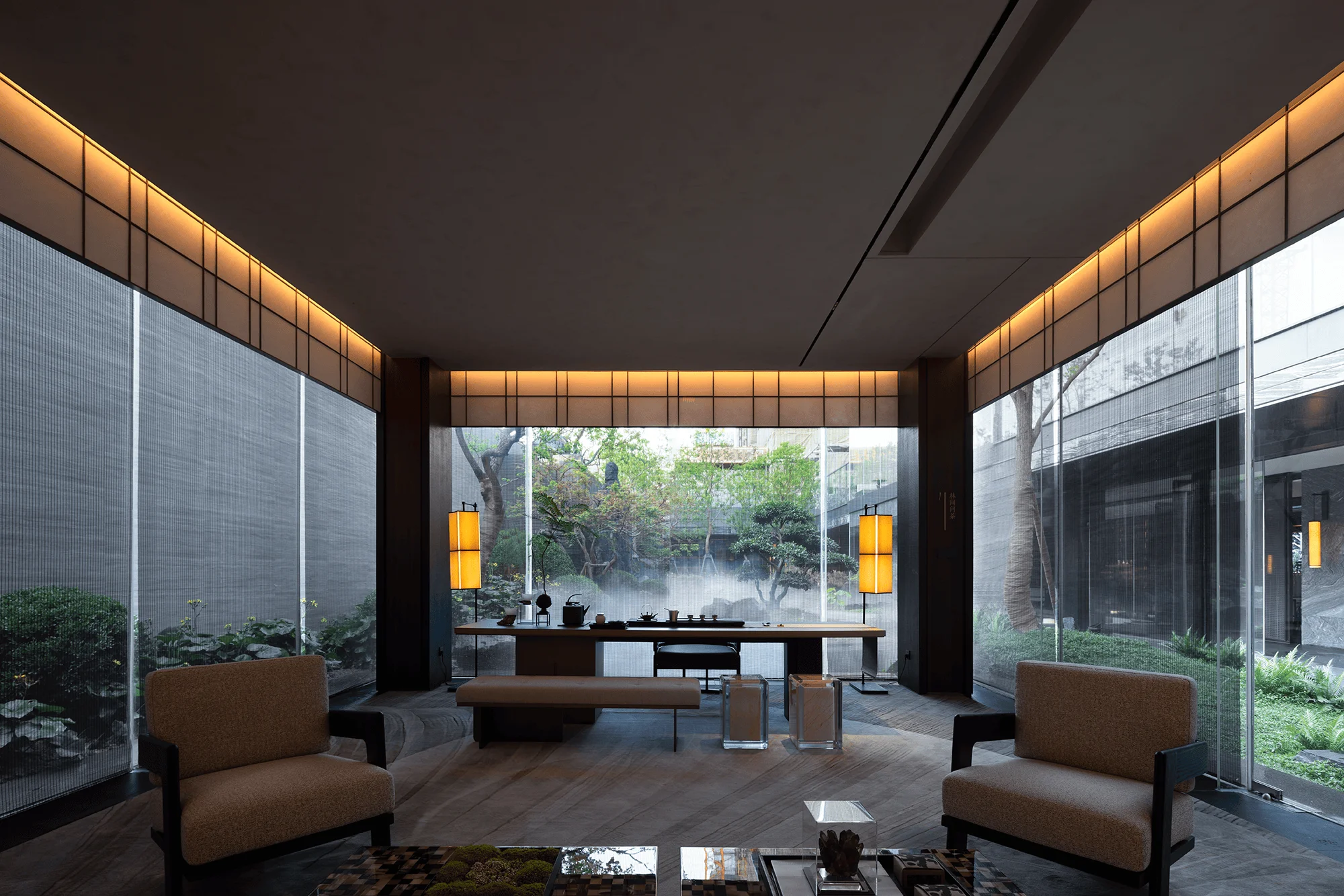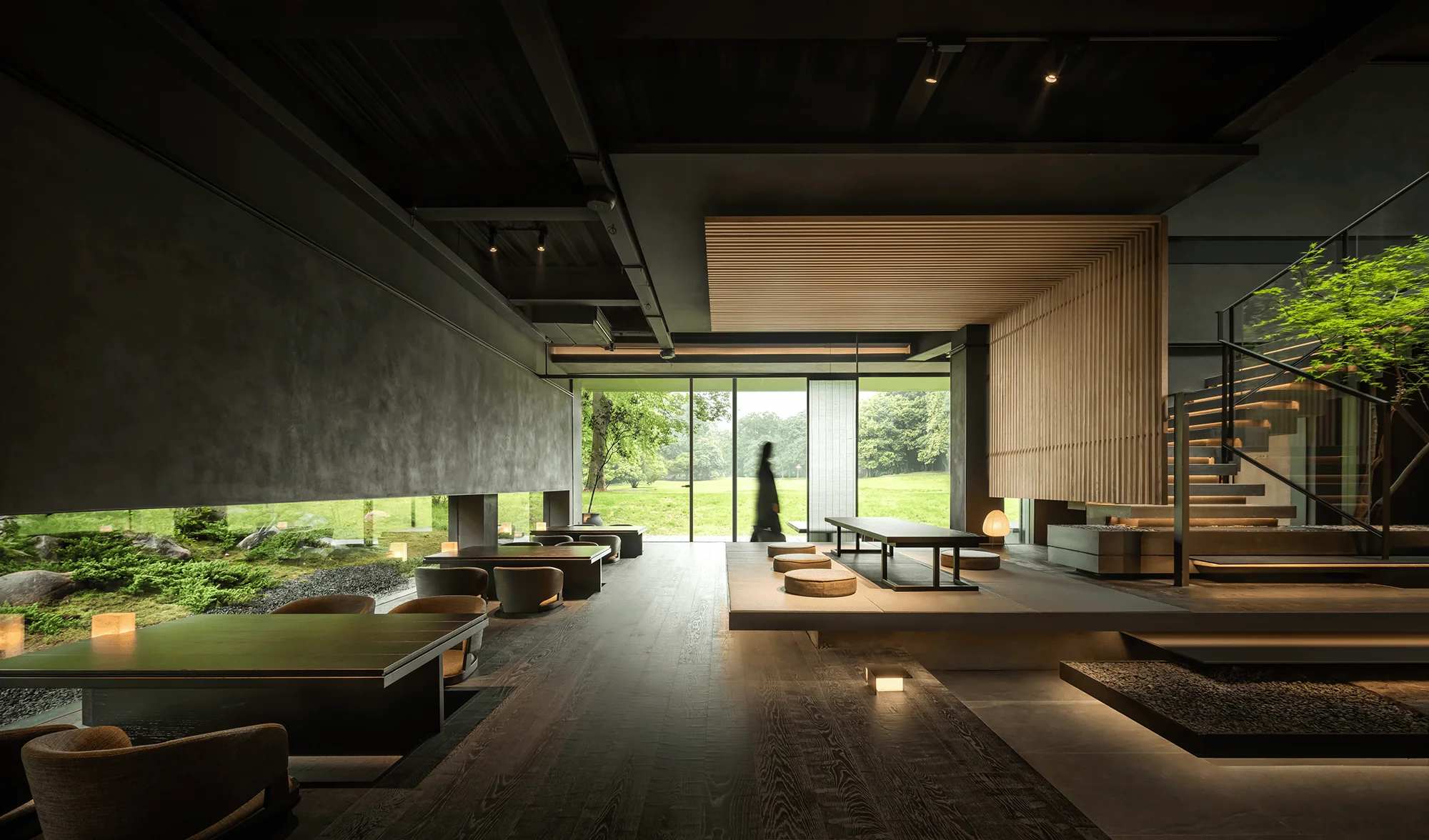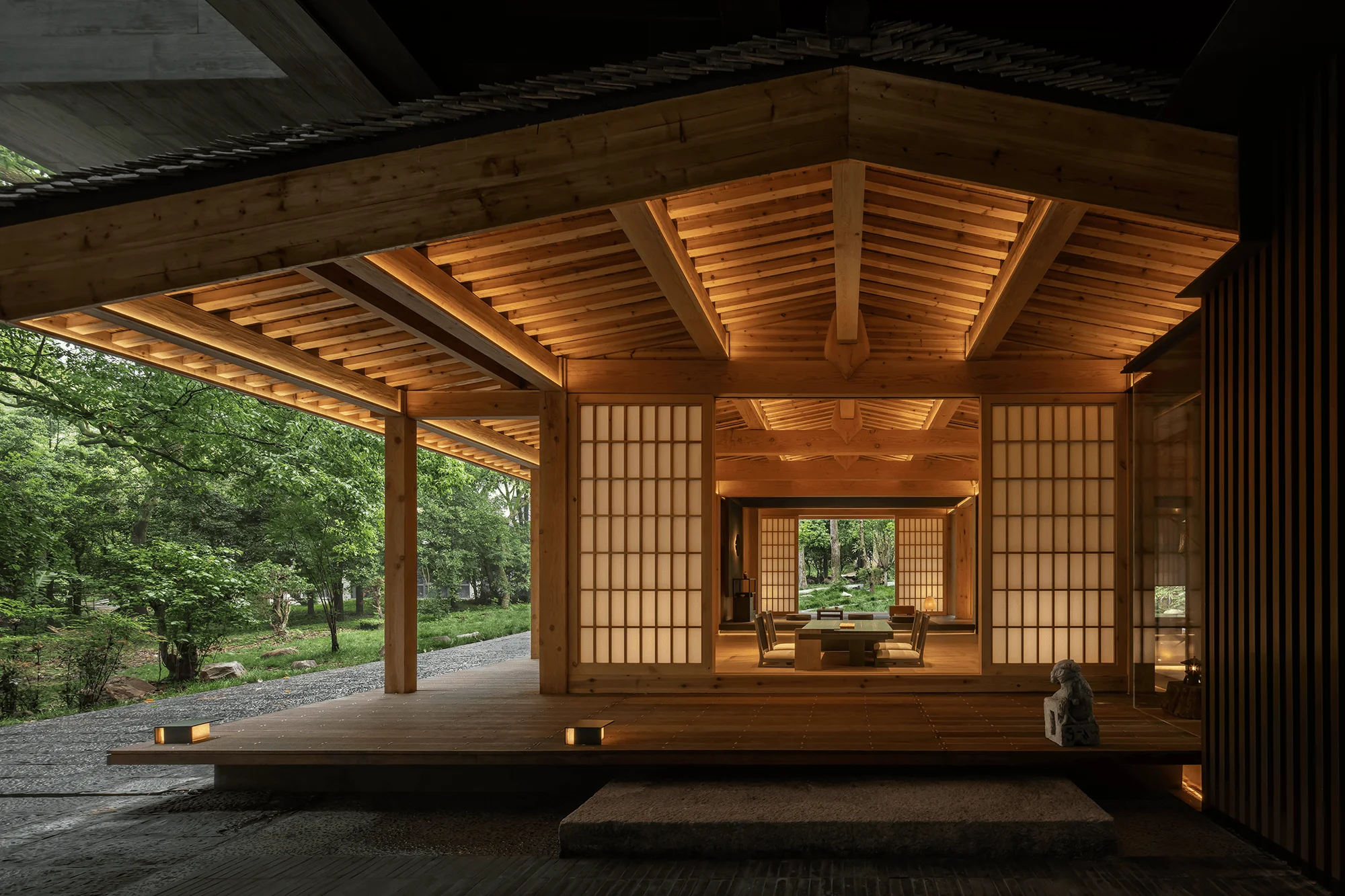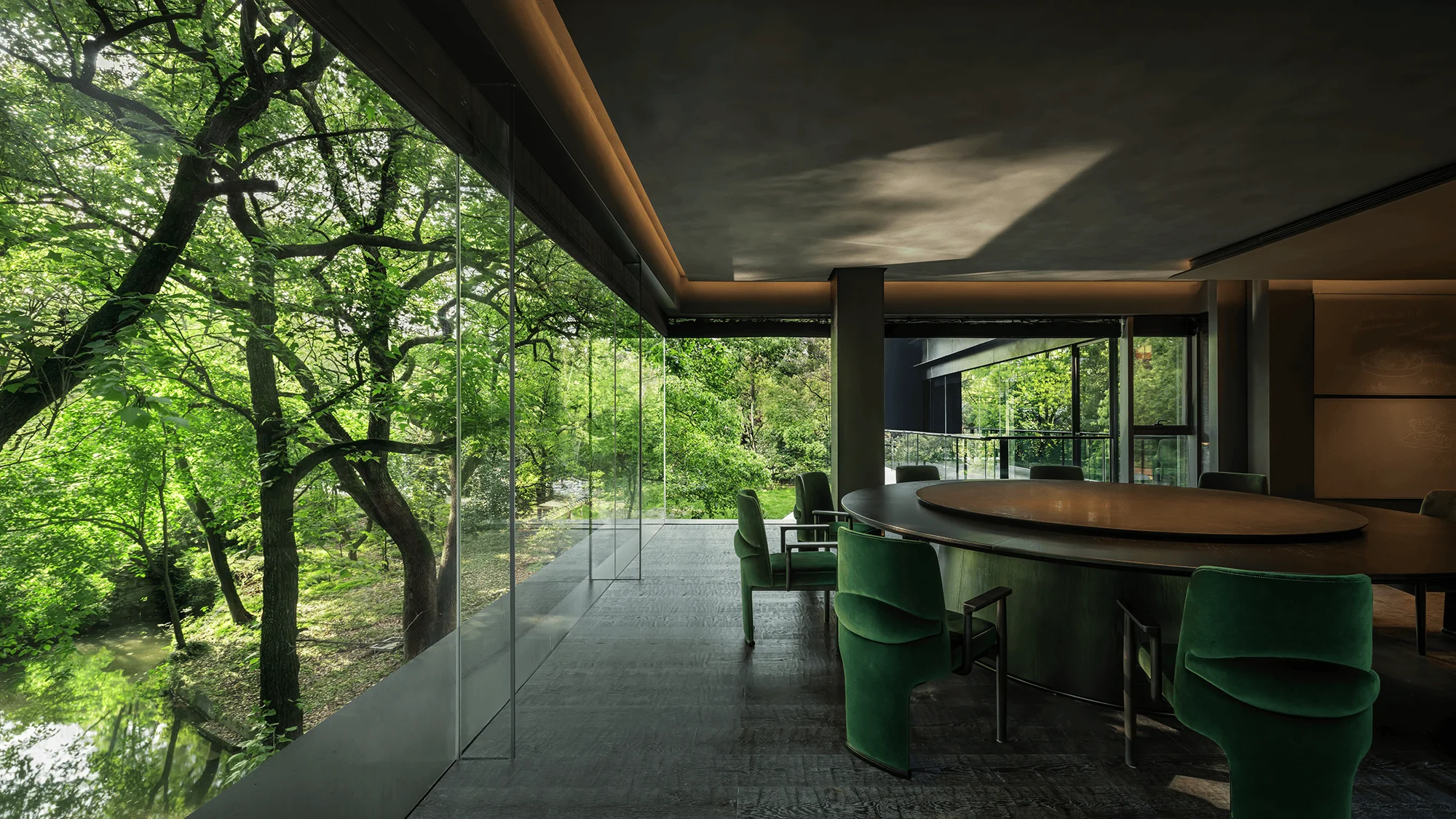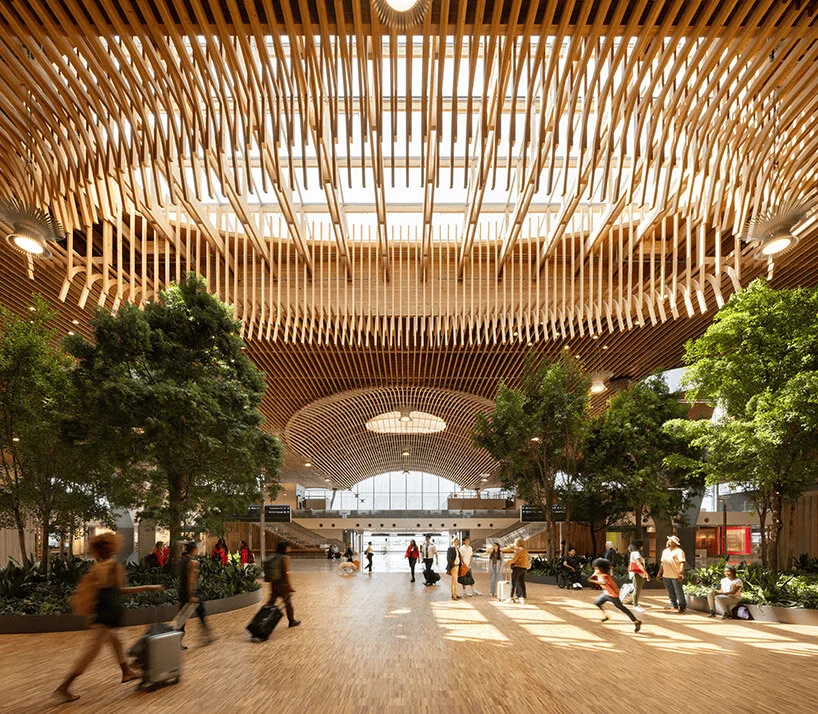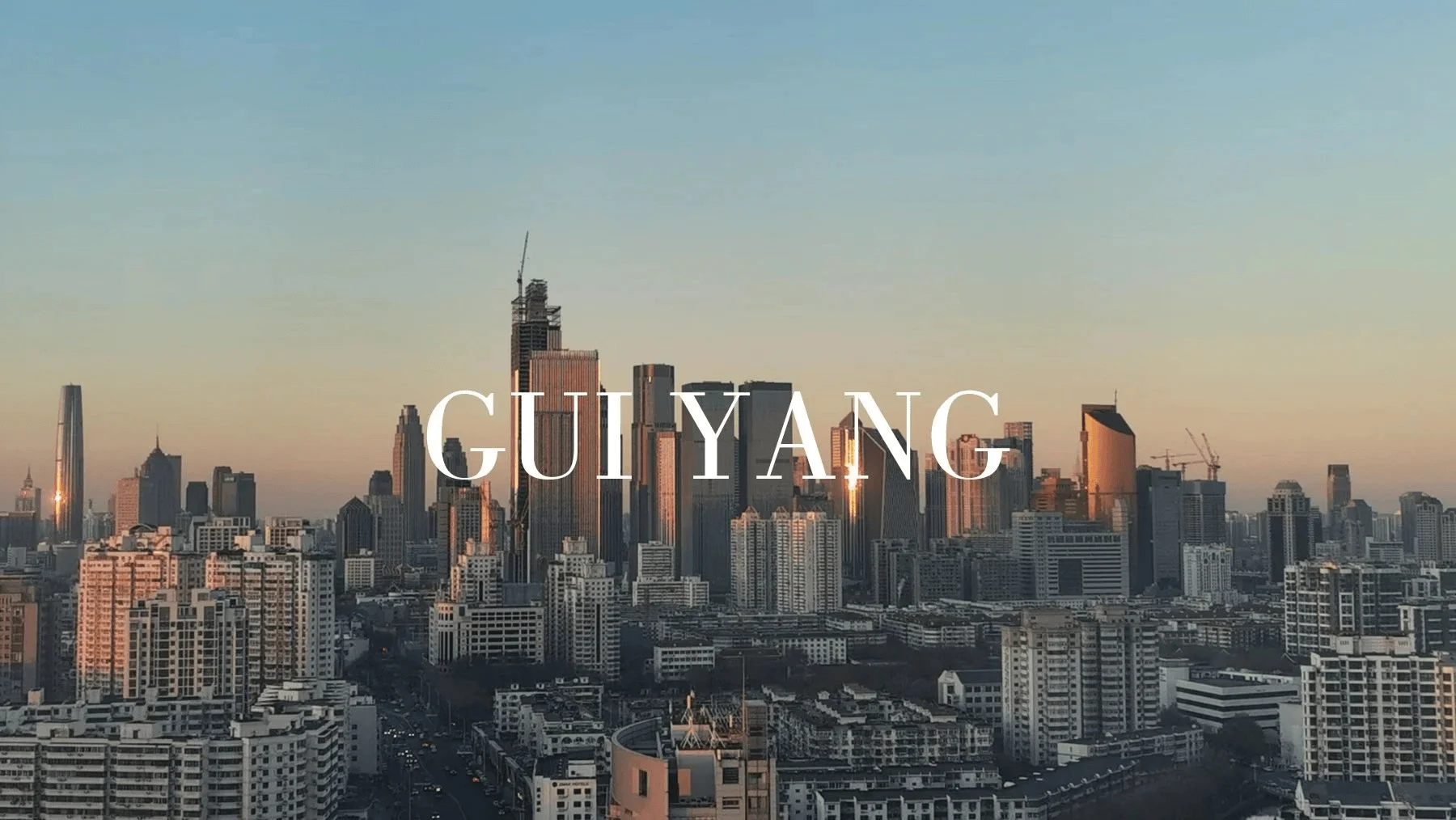He Qi Yun Jing Lifestyle Pavilion, a modern oriental design with a peaceful atmosphere in China.
Contents
Project Background: Modern Oriental Aesthetics in a Bustling City
In the contemporary realm of design, characterized by diverse and dynamic styles, there’s a growing need for a new kind of spatial contract – one that embodies both tranquility and strength, subtle luxury and artistic depth. This contract necessitates a delicate balance of form, sound, color, and texture, creating an environment that is neither overly exuberant nor overly restrained. Instead, these elements intertwine harmoniously, producing a profound and captivating peaceful atmosphere. Located in the heart of Fenghua, a city renowned for its vibrant commercial activity and its proximity to serene natural landscapes, He Qi Yun Jing Lifestyle Pavilion serves as an oasis of calm. The design embraces the concept of “spatial islands”, carefully dividing the space into a series of interconnected yet distinct functional zones. These zones resemble islands scattered within a garden, each possessing its own unique charm while contributing to a unified and harmonious whole. This approach enhances the spatial hierarchy and sense of exploration, encouraging visitors to experience the beauty of the shifting views as they navigate the interior. This project aims to cultivate a deeper connection between humanity and nature. interior design trends, contemporary architecture, modern oriental design.
Design Concept and Objectives: Harmony of Nature and Art
The design philosophy behind He Qi Yun Jing centers around the concept of integrating nature and art into a serene and luxurious environment. It’s a sanctuary of tranquility amidst urban bustle, a place where people can connect with nature and find inner peace. The design team employed a minimalist aesthetic, emphasizing the inherent beauty of natural materials and forms. The use of natural light, abundant greenery, and a water feature contributes to a sense of calm and serenity. This approach aligns with the modern trend of biophilic design, which highlights the positive impact of nature on human well-being and productivity. This harmonious coexistence between nature and architecture is a central design theme, reflected in the selection of materials, textures, and colors. interior design trends, contemporary architecture, modern oriental design.
Functional Layout and Spatial Planning: Spatial Islands and Flow
The spatial arrangement employs a concept of ‘spatial islands’, dividing the space into a series of interconnected functional zones. Each zone is designed with a specific purpose in mind, such as a reception area, a lounge, a library, and dining spaces. Each zone is uniquely designed to create a sense of seclusion and intimacy, ensuring that each visitor can appreciate the unique character of each space. The seamless transition between these islands ensures a sense of continuity and visual interest, while maintaining a sense of flow and connectivity. The circulation path through these interconnected spatial islands provides a unique and immersive experience. This is enhanced by the strategic use of natural light, as well as the integration of greenery and water features into the interior landscape. This creates a sense of tranquility and harmony within the space. interior design trends, contemporary architecture, modern oriental design.
Exterior Design and Aesthetics: Blending with the Natural Environment
The exterior design seamlessly integrates with the surrounding natural landscape. The large glass windows throughout the space blur the boundaries between indoors and outdoors, offering panoramic views of the lush greenery and water features. This blurring of boundaries brings the tranquility of nature into the interior spaces. The overall impression of He Qi Yun Jing is one of naturalness and refined elegance. The project’s location, within a vibrant city that is also close to nature, further contributes to the tranquil and inspiring quality of the design. The building’s exterior is designed in a minimalist style, with clean lines and natural materials, creating a sense of harmony with the natural environment. The overall effect is both serene and sophisticated, reflecting the project’s concept of integrating modern oriental aesthetics with natural elements. interior design trends, contemporary architecture, modern oriental design.
Technology and Sustainability: Light and Shadow
The ‘Skylight Well’ is a creative integration of architectural and interior design elements, emphasizing the use of natural light. This architectural feature effectively introduces natural light into the interior spaces, mitigating the sense of confinement and heaviness often associated with traditional interiors. It provides a dynamic and captivating visual experience. The interplay of light and shadow is a constant throughout the design, with the use of natural materials and the Skylight Well contributing to the space’s atmosphere. This plays a key role in defining the aesthetics and mood within the various functional areas. The design also emphasizes the importance of sustainability, incorporating eco-friendly building materials and energy-efficient lighting solutions. interior design trends, contemporary architecture, modern oriental design.
Social and Cultural Impact: Spaces for Connection and Reflection
He Qi Yun Jing lifestyle Pavilion aims to promote relaxation and social interaction by providing a range of spaces for visitors to relax, socialize, and reflect. Spaces like the library and tea room provide a tranquil environment for individuals to relax and connect with their inner selves. The emphasis on a peaceful atmosphere and a connection to nature positions He Qi Yun Jing as a unique and enriching social space in the city. The design also reflects a deep understanding of Chinese culture and design sensibilities, offering a modern interpretation of traditional elements. This approach is evident in the design features and material choices. interior design trends, contemporary architecture, modern oriental design.
Conclusion: A Sanctuary of Tranquility
He Qi Yun Jing Lifestyle Pavilion is a testament to the harmonious fusion of modern design and oriental aesthetics. The design seamlessly blends nature and art, creating a serene and luxurious haven within a bustling city. The project successfully integrates functionality with beauty, offering a range of spaces that cater to a diverse range of needs and preferences. Through a mindful approach to the spatial layout, the use of natural light, the selection of materials, and a consistent focus on creating a peaceful and harmonious atmosphere, the project is a testament to the power of design to enhance the human experience. This project offers valuable insights into how interior design can contribute to creating spaces that promote relaxation, reflection, and social interaction. interior design trends, contemporary architecture, modern oriental design.
Project Information:
Project Type: Lifestyle Pavilion
Architect: Louis Liou International Space Design
Area: 1600 sqm
Year: Not specified
Country: China
Main Materials: Marble, Wood, Fabric, Stone
Photographer: OuYang Yun


